

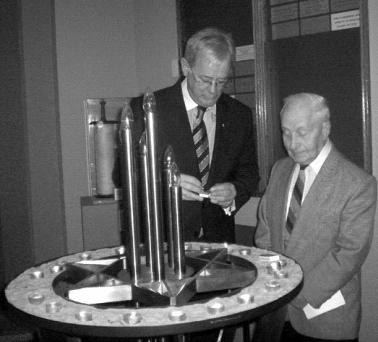

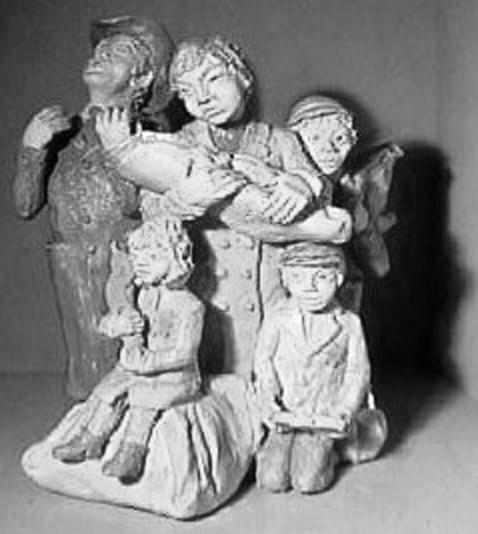
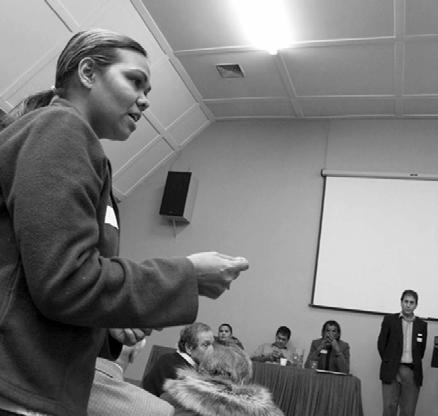
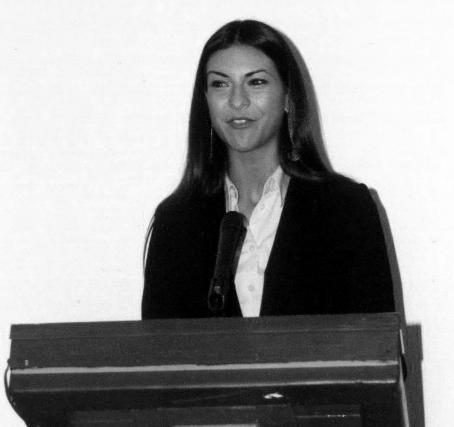
VOL. 28, No. 3 DECEMBER 2006 Registered by Australian Post, Publication No. VBH 7236 Registered Museum Under the Patronage of “Yad Vashem” Jerusalem 13-15 Selwyn Street, Elsternwick, Victoria 3185, Australia, Phone: (03) 9528 1985 Fax: (03) 9528 3758 Email: admin@jhc.org.au Website: http://www.jhc.org.au T HE C ENTRE P ARTICIPATES IN AND INITIATES NUMEROUS ACTIVITIES .
The Jewish Holocaust Museum and Research Centre is an Institution dedicated to the memory of the six million Jews who were murdered by the Nazis and their collaborators between 1933 and 1945.
We consider the finest memorial to all victims of racist policies to be an educational program which aims to combat anti-Semitism, racism and prejudice in the community and fosters understanding between people
Holocaust Centre Executive
Co-Presidents: Shmuel Rosenkranz & Pauline Rockman
Vice-President: Alex Dafner
Chairman: Harry Bryce
Co-Treasurers: Allen Brostek & Abram Goldberg
Secretary: Helen Mahemoff
Public Officer: Ian Grinblat
Public Relations & Centre News Editor: Stan Marks
Foundation Patrons
Sir William Deane, Sir Gustav Nossal, Steven Spielberg, Professor Yehuda Bauer, Mrs. Diane Shteinman AM, Mr. Marc Besen AO, Mrs. Eva Besen.
Centre News
Editor: Stan Marks
Editorial Assistance: Shmuel Rosenkranz, & Lena Fiszman
PLACE FOR UNDERSTANDING
Stan Marks
The Elsternwick Holocaust Centre has been in the news lately, as a place for fostering understanding and indicating what can occur when racism and hatred raises their ugly heads. Its importance and acceptance by the wider community was shown following the Caulfield attack on Menachem Vorchheimer. It was given a wide coverage by almost all of the daily press, TV and radio. And perhaps, as many Melbourne Herald Sun readers were reported as saying, due to recent events, it was a “frightening sign of the times”. There has also has been a general increase in anti-Semitic actions, including graffiti, indicating the urgent need for all to support the Centre and its activities, not only in keeping alive the message of the Holocaust but in its ever-widening diverse outreach educational program.
Suggestions were made that the alleged perpetrators of the attack on Mr. Vorchheimer visit the Holocaust Centre and see what verbal and physical attacks can lead to - the deaths and life-long sufferings of millions of people. Visits of this nature have been beneficial in previous instances where people who have made anti-Semitic and other racist remarks were advised to spend time at the Centre. Their visits have proved highly beneficial to them, and even in many cases changed their attitudes. They have gained a greater understanding of other people’s beliefs and lifestyles. A positive note that came out of the attack was the fact that bystanders did not just stand by but supported Mr. Vorchheimer and notified the police.
It was with delight that I read of author Elie Wiesel receiving an honorary British knighthood. I had the pleasure of spending an afternoon with him in his New York apartment and gained some insight into the man and what he stood for. It is also pleasing as his book “Night” is one of the most widely read and commented on by many of the more than 400,000 students who have visited the Holocaust Centre. Some have said reading the book and visiting the Centre changed their lives and led them to discover more about the Holocaust and other atrocities.
Elie Wiesel’s words on receiving the Nobel peace Prize some years ago seem even more pertinent in today’s uncertain world and following the attack on Menachem Vorchheimer. Elie Wiesel, among other things, stressed the importance of never being silent whenever human beings endured suffering and humiliation. He said, “Silence encourages the tormentor, never the tormented. Sometimes we must interfere. Whenever men and women are persecuted because of their race, religion or political views, that place must - at that moment - become the centre of the universe.”
As topical today as when he received the Nobel Prize. We cannot change the past but we can help to ensure it isn’t repeated.
Front cover:
Indigenous community event; Sarah Saaroni sculptures; Belinda Raffa at fundraiser; Andrew Robb, MP, and Abram Goldberg in Memorial Room: and Rabbi Fred Morgan who lectured at the Centre.
2
Yiddish:
Ajzenbud CONTENTS Editorial 2 MP’s Visit, Award & Elie Weisel’s message 3 Author Answers Questions 4 Dr. Nathan Serry—Humour 6 Museum Publication Guide 7 Gathering testimonies 7 Rabbi Fred Morgan’s lectures 8 Holocaust organisations 9 Indigenous Community Discussion 10 Why Yiddish? 11 Recreating Vanished World 12 Museums Study Tour 13 South African Evening 14 Cape Town Centre 15 Norway’s Holocaust Museum 16 Sarah Saaroni’s World 17 Auction Raises Over $120,000 18 Students’ Inspirational Comments 22 Library Addition 23 Book Review: “Suite Francaise” 24 Babi Yar Monument 25 The Katzetlers 26 Meyer Burston Scholarship 27 Batmitzvah Visits 28 Righteous Among The Nations 29 Arthur Calwell’s Daughter 29 My Year As A Guide 30 Acquisitions 32 Personal Announcements 33 Make A Pledge 34 Ads 35 Yiddish 42
Moshe
*****
ANDREW ROBB, MP, GAINS INSIGHT INTO CENTRE
Andrew Robb, Federal Member for Goldstein and Parliamentary Secretary to the Minister for Immigration and Multicultural Affairs, spent 90 minutes gaining an insight into the Holocaust Centre, in October. He is pictured on the front cover of Centre News with long-time dedicated Centre volunteer and treasurer and now cotreasurer, Abram Goldberg, lighting a candle in the Centre’s Memorial Room.
Mr. Robb’s visit is part of an ever-increasing number of VIPs visiting the Centre from all walks of life, and, in turn, more Centre volunteers and other staff members addressing a growing number of organizations, corporations, service clubs and governing bodies. There is an ever-increasing interest in the Centre, including its activities in combating racism and hatred in all sections of the community.
He enthused about the Centre's local-international
reputation, saying that just its presence was a constant reminder of the past and how we need to live. It was a example of what could happen in a country if one is not vigilant and the nation was resting on its laurels. He praised the work the Centre was doing, and explained he had been interested in the Holocaust for many years. He visited the various departments and exchanged ideas with archives and testimonies heads. He said it was a very impressive and remarkable place.
Kathryn Hodges, assistant in Mr. Robb's office, who was with him, last visited the Centre, as a St Paul’s College student in 1997, and she was very impressed with the Centre and its message. Steve Pollard, Community Liaison Officer, Multicultural Affairs, Department of Immigration and Multicultural Affairs, also visited the Centre during October.
SHMUEL ROSENKRANZ’S INAUGURAL JCCV AWARD
Congratulations to Shmuel Rosenkranz, co-president of the Holocaust Centre, on receiving the Jewish Community Council of Victoria inaugural Sir John Monash Award, named after Australia’s much honoured First World War general and identity. Shmuel also received a Certificate of Recognition and Appreciation and letter on behalf of the Victorian Government, from Gavin Jennings, MP, Minister responsible for Senior Victorians, for his community work. Professor David de Krester, Governor of Victoria, presented the awards at a ceremony at Monash University.
Shmuel (Emil) Rosenkranz has devoted his life to fostering understanding among all sections of the Australian community, and especially in bringing Jews and non-Jews closer. He is still active at 84, though visually impaired, believing that age does not preclude one from engaging in diverse community activities.
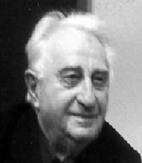
Shmuel became co-president with Bono Weiner of the Centre in 1990 and president on Bono Weiner’s death in 1995. He became co-president with Pauline Rockman this year. He has had numerous awards for
his lifetime of volunteering, including the coveted B’nai B’rith’s annual Menorah award, the SBS award for NonEnglish migrants who have contributed to Australia’s cultural development, the Victorian Multicultural award for Excellence in Multicultural Affairs and a Glen Eira Council annual award for those who have given selfless service to the community.
In his letter Mr. Jennings wrote that “As a Government and as a community we are proud of the skills, experience and wisdom of senior Victorians and their contribution to the economic and social success and diversity of this State. This Certificate is a small way of indicating our value for you and to thank you for the work that you do within the Victorian community.”
Shmuel Rosenkranz said he was proud of receiving various honours, especially the JCCV inaugural one and that it indicated the appreciation for voluntary community work.
Shmuel came to Australia from his native Vienna in 1939, escaping Austria after the horrendous Nazi Kristallnacht.
Marsha Weiner received the Certificate of recognition for her many years of service to the Polish Federation. Marsha was one of the initial group among the visionaries who started and worked so tirelessly to ensure Melbourne had a Holocaust Centre.
MESSAGE FROM SIR ELIE WIESEL TO CENTRE NEWS
Sir Elie Wiesel has sent Centre News a message which was for the Schools' Reunion, which has now been postponed until a later date due to unavoidable circumstances. Although it will not be now held as early as planned, the message is very pertinent.
In the message, Sir Elie wrote thanking Centre News for updating him on the "important work of the Jewish Holocaust Museum and Research Centre." He added
that in particular he was moved to read of the proposed “Reunion for Understanding”, which would gather individuals who, learning about the horrors of the Holocaust, had decided that they would never forget about the tragedies of the past and would educate those who were not yet aware.
It would be a fruitful reunion for which he sent his best wishes. Centre News also congratulated Elie Wiesel on receiving his recent British knighthood.
3
Shmuel Rosenkranz
AUTHOR ANSWERS QUESTIONS ABOUT FATHER
GESTAPO HEAD
In revealing answers to email questions by Centre News editor, Stan Marks, highly-acclaimed Austrian author, editor and journalist, Martin Pollack explains why he wrote the book "The Dead Man In The Bunker" (Disovering My Father), a detailed and unflinching account of his father's notorious Gestapo activites during WW11.
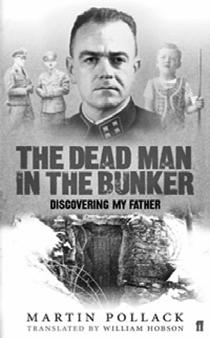
In the book, Martin Pollack tries to answer that often-asked question "What did you do during the war, father?" and discovers that he is the illegitimate son of Dr Gerhard Best, lawyer, athelete, former head of the Gestapo in the Austrian city of Linz and a wanted war criminal. Pulling no punches, Martin Pollack explains that his devoted grandparents, with whom he spent pleasant holidays as a child, were dedicated Nazis who hated Jews and never renounced what the Nazis had done.
Pollack investigates his father's activities from Austria to Poland and Russia, heading an Einsatzgruppe, a killing squad, and returning to Poland during the Warsaw Uprising in 1944.
The deeply analytical work reads like the account of a highly competent invesigative journalist-writer, with a very deep insight into the Nazi machinations and what can happen to a whole family when nationalism takes hold and in which morality disappears and genocide was justified. It begins with Martin Pollack driving with his wife to look for the bunker in which his father had been found dead 56 years before, where he had been shot and buried in an apparent robbery. One thing Pollack says he knew from the outset: his father's death had been the conclusion of a life governed by violence.
The questions to Martin Pollack and his answers are:
Why did you actually write the book?
Being born in a family where everybody, literally every boy, grandma, grandpa, father, uncle, was a Nazi, and an active one too, I felt an obligation to talk (or rather: write) about this family and try to explain why they choose this way. I never tried to excuse anything. I just wanted to find an explanation – also and maybe mainly for myself – why my father joined as a young man the Nazi party, less than a year later the SS and right after the "Anschluss“ in 1938, the Gestapo.
That’s why I went in my research back into the 19th
century, because that is where the roots for this disastrous development, in my opinion, are to be found. So, the first reason was to find an explanation for myself; then there was the attempt to explain something to other people, who very often don't know much about those times. I was surprised how many people, even in Austria, were not aware what an important role the border-territories played (like my family coming from a region where Slowenes and Germans lived together). Was it perhaps to purge himself of the events of the Nazi era?
No, I don't think that was the reason why I wrote it. I don't think that we, the later generation, are able to "purge“ ourself, let alone our parents, from anything. I never felt any kind of guilt because of the deeds of my father or grandfather – I was born too late to witness what they did. But I felt the responsibilty to tell what I knew about these times, about my family, about their thinking – and I would have felt guilty, I think, if I would have kept this all to myself.
To expose the older generation?
Well, there is something in that, though I had no desire to expose my father – who was killed in 1947 –or my grandparents, who are dead. But I did wish to expose somehow the Austrian way of thinking: I mean here is the idea that Austria was the first victim of Hitler Germany. Of course, that is true in a way, but it is also true that many Austrians, like my family, greeted Hitler and the Wehrmacht with great joy, and its also true that many Austrians served in the SS, in the Gestapo, in Concentration Camps, etc. I grew up in Linz in Upper Austria. My stepfather, Hans Pollack, went to school with Adolf Hitler in Linz for two years, he knew him fairly well (he was only two years younger). Ernst Kaltenbrunner, the chief of the RSHA (Reich Security Office), came from Linz, also Adolf Eichmann. Now I live in the Südburgenland (South Burgenland), a region near the Hungarian border, a few kilometers from here the ill-famed, Alois Brunner, right hand of Adolf Eichmann, was born. And when you go to the village where he comes from (Rohrbrunn) nobody will talk with you about him – because Alois was always an honorable man! These are just a few examples to show that the Austrians where not victims of Hitler Germany, the majority welcomed Hitler, and many served willingly in the most terrible units.
This is well known, of course, but in Austria many people still don‘t want to admit it – let alone speak about it.
My grandparents did not belong to the generation which said: we didn't know what was happening. They knew, and they didn't pretend otherwise. But they
CENTRE’S OPENING HOURS
Monday, Wednesday: 10.00am – 4.00pm
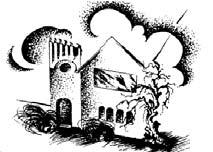
Tuesday, Thursday, Friday: 10.00am – 2.00pm Sunday: 12.00am – 4.00pm
Admittance free
4
never admitted that they had done anything wrong. In their eyes – I am talking here about my grandmother and my uncle who passed away this year, my grandfather died too early, so I was too young to talk with him about these things. Everything that Hitler and his men (including my father) had done was right, was just, was necessary. When my grandmother found out that I was thinking otherwise she tried to convince me – she was the main ideologist in the family. My uncle just thought I was worthless, not a good German, a traitor…. Why didn’t the Grandparents talk about it?
As I said, my grandfather died when I was too young to talk about such things. I remember him very fondly as an old man who took me for long walks and told me fantastic stories about his hunting adventures. My grandmother did not like to talk about these things, only when she felt it "necesserary“ she did – like when I voiced the wish to go to Prague, or when I decided to study Slavonic literature and East European history. She always told me that my father had been an honourable man, a hero. It was unjust that after the war he had been sought as a war-criminal (as it was unjust that my grandfather was imprisoned after the war for some time). There was a tendency – and I think that is true for most Nazis – that they had always been victims, never perpetrators. They thought that they always had to defend themselves – against the Slavs, the Jews, the Russians, the Allies and so on. You find this kind of thinking even nowadays in Austria and not only here: we never did anything wrong, we were only trying to defend our position (as Germans) in a hostile world. I have written an essay on this attitude not long ago for an Austrian magazine.
What is the Austrian Situation today regarding the Past?
I dont think it is so bad, of course there are still people – as I have pointed out before – who dont want to face the terrible past . They prefer to see Austria as Hitler's first victim, or even some who still don"t want to admit that Hitler's Germany was as bad as most people say. We had this year a political affair when a politician – from the far right, one of Mr. Joerg Haiders followers, said that the Nazis had suffered a terrible persecution after 1945. That is what I was referring to when I wrote about the Nazis often presenting themselves as victims. But these people are a minority in Austria, on the whole think otherwise.
There are many young historians and other scholars who wrote in the past decades books about Austria’s terrible past and the shameful role many Austrians played in those years. But of course, I repeat, there are still too many people who don't want to admit this, or who say that it‘s now time to forget, that we have more important things to do, that we must stop looking back. I would say that the political right could – given the right conditions, let‘s say rising unemployment, other problems – count on about 20 percent of the voters. That is a lot, far too many, but its not the majority. On
the whole, Austria seems to be a stable country, with a sound democracy. That doesnt mean that antiSemitism is not a problem, but I wouldn't say it‘s a burning one. What’s more important nowadays is xenophobia, the fear that immigrants are taking away our jobs, are responsible for the rise of crime and so on. But this is a problen all over Europe. And one has to admit that in Austria we have few cases of violence against foreigners, immigrants…
Martin Pollack
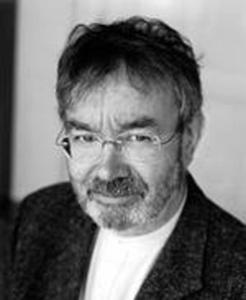
Could there be a repetition of the past?
No, I dont think there is a real danger of the past repeating itself. The general conditions are too different. Most Austrians are quite happy with their state, they are quite happy to be Austrians, there is not real desire for an "Anschluss“ (with Germany). Austria is a rich country, we are an affluent society, the party system is not ideal, but definitely stable. I dont even think one could call Mr. Haider a real Nazi. I know him fairly well, as I was working for years in Austria as a correspondent for the German weekly Der Spiegel, and Haider was then always good for a story. In my opinion, he is a very modern politician – in a negative sense, he is 100 percent a populist, who is telling the people what they want to hear. And,of course, he has a "rightist“ background. He comes from a Nazi family like me.
The real danger in my opinion lies somewhere else: I am afraid that many from my generation don't want to hear anymore about the past, about Hitler, about Eichmann and so on. The challenge is to find a way to reach them. That is what I tried with my book – and I was quite successful in a way. I had many readings and discussions, also in schools, and very often I met with an interesting reaction: that even very young people, 16, 17, all of sudden, said they had heard that also in their own family somebody had been involved in the Third Reich, had been in the SS, in the Gestapo. In most cases they had just heard about it, when they asked their parents for details they did not get an answer. And they asked me if I could tell them how to go about to find out more. So it seems the interest is there, we just have to find the right key to the door. That is probably the biggest challenge for the years to come.
Martin Pollack's books are: Anklage Vatermord Der Fall Philipp Halsmann (Charged with Patricide. The Case of Philipp Halsmann); Galizien. Eine imaginäre Reise durch Ostgalizien und die Bukowina. (Galicia. An imaginary journey through Eastern Galicia and the Bukowina), 2000, and Des Lebens Lauf. Jüdische Familienbilder (The Course of Life. Jewish Family pieces). “The Dead Man In The Bunker“ is published in Australia by Allen & Unwin.
“Six million were wiped off the face of the earth. There is a danger that they will be annihilated from our memories. Are they doomed to a two-fold annihilation?”
Abraham Joshua Heschel
5
USE OF HUMOUR IN THERAPY
Dr. Nathan Serry
Treating trauma is a critical aspect in the work of most psychotherapists.
Many techniques have been developed to assist the victims of trauma in the process of returning to something like previous levels of functioning.
It is not my intention in this article to discuss the various approaches used in the treatment of chronic post-traumatic stress disorder, but rather I would like to move into left field and explore the use of humour in the therapeutic context.
As a sometimes humourist and fulltime psychiatrist, I have often been asked to discuss the role of humour in therapy.
Most of the scholarly articles on this subject are incredibly dry and devoid of any laughing matter. So I shall not pursue a literature review of the area.
Rather, I would like to commence with a little personal recollection.
I remember a particular patient, a woman in her thirties who after seeing me on a weekly basis for some 12 months, told me in what was her last session, that she had originally been referred to me by her GP as he knew that I was “into comedy” and that therapy with me might help her emerge from her chronic gloom.
She told me that whilst she felt that the therapy had been successful and that she was much better, she had come to the conclusion that I was the most humourless bastard that she had ever met.
I tell this vignette as a precursor to what is a controversial field. How can one possibly link or incorporate laughter or frivolity with those most unimaginable of horrors experienced by Holocaust survivors.
There is no easy answer and I believe that such linkage can never be a goal of treatment.
By this I mean a therapist should never deliberately set out to try and make a trauma victim see the lighter or funnier side of things.
Does this mean there is no place or room for humour in the therapeutic context? Absolutely not. There is ample room for humour but it must be effectively introduced by the patient or client. It is only
when this is the case, that the therapist can laugh with the patient but never at the patient.
The humour in association with trauma can emerge in the process of working through issues in much the same way as ordinary life in its spontaneous, unexpected and unpredictable way throws up moments which bring a smile to our faces.
This process is facilitated by time and distance. The passage of time and the experience of distance can enable some of the rawness to evaporate, enabling the trauma to be handled at least some of the time as though it is not a hot potato.
My own clinical experience with Holocaust survivors is that there is no “one size fits all” syndrome. The survivor experiences are heterogeneous.
Even if the actual trauma and deprivation has been similar, the individual experiences always differ and the way such experiences have been perceived, dealt with and incorporated, significantly influence long-term outcome.
The therapy process is most helpful when expectations of what can be achieved are reasonable and achievable.
No amount of therapy can ever remove the trauma that a Holocaust survivor has suffered.
One cannot surgically remove the past. What is reasonable is to try and ensure that the trauma from the past has less of an effect on the present and future. One can douse the flames so that the heat is diminished.
In this scenario, any intrinsic humour can emerge.
Conversely there is little room for exploration or growth when expectations are not reasonable or achievable. Similarly, when the bitterness, rage and suffering are excoriatingly re-experienced time and again, any humourous interpretation will almost certainly be experienced as being profoundly insensitive.
We as a group love black humour. Laughter in the face of adversity has been a hallmark of Jewish life. Even so, the application of such humour remains exquisitely sensitive in relation to the Holocaust.
Dr. Serry is a well-known psychiatrist.
GIVE YOUR SURVIVOR TESTIMONY
We want to hear from all survivors and to record their vital testimonies. This is especially urgent for future generations.
Over the years, the Holocaust Testimonies Department, part of the worldwide project under the patronage of Yad Vashem, has recorded more than 1,200 testimonies of Holocaust survivors. These have become a living record of what happened to men, women and children during the Nazi Era, and an answer to those who deny the Holocaust occurred. Have you given your testimony yet? If you haven’t, please call:
Phillip Maisel 9527 6282 or Holocaust Centre 9528 1985
6
MUSEUM GUIDE – LESS AND MORE
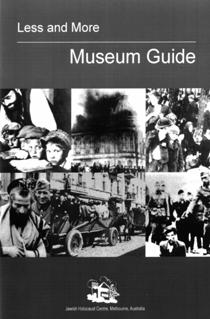
Saba Feniger, former Centre voluntary curator (1985-2001) has compiled a useful publication for adults and youngsters, covering much of the Centre’s collection. It is a handy guide as one walks around the permanent exhibition, and will add to a visit.
It covers topics such as The Vanished World, The Ghettos, Extermination Camps, Janusz Korczak, Rescue and Abandonment, Righteous Among The Nations and Deportations. Selling at $5.50 (which includes GST), it is a valuable introduction to the Centre’s contents.
Saba Feniger said: By presenting “Less and More” for the Jewish Holocaust Museum in Melbourne I intend to show the visitor less photographs but share more anecdotal information. It is my hope that this endeavour
will make the visit more interesting, educational and memorable.
“I have included brief general historic notes to make the viewing user-friendly.
“This booklet is not a complete catalogue but a sketch of the body of photographic exhibits, a handy guide to the material contained on each of the museum’s panels. The reprinted photographs represent an abbreviated version of each topic. They also serve as an introduction to entice the visitor to spend a more meaningful time examining each of the panels in greater detail.
“This museum was founded by Holocaust survivors. For many years after its establishment, most of the work carried out in the museum including the guiding, has been done by volunteers, most of whom were survivors.
“Great importance has been placed on including photographs that pertain to local (Melbourne) content in order to bring the events closer to the visitor.”
Saba thanks many people (listed in the booklet) for their invaluable assistance with the project.
The publication was sponsored by the Friends.
ISRAELI PROFESSOR GATHERS LOCAL TESTIMONIES
“Greek Jews in the Holocaust Period” attracted a number of Greek non-Jews as well as the Jewish public. Some members of the Greek community were so inspired by the lecture that they returned for the second lecture even though the topic “German Cruelty, Humiliation and Dehumanization” was not related to the previous address.
Dr. Gideon Greif, Director of the Polish Desk, European Department, the International School for Holocaust Studies, recently visited the Centre. He gathered testimonies from survivors of Majdanek and Auschwitz. He is shown with Testimonies Department head, Phillip Maisel.
Dr. Greif came to Australia for the 5th Biennial Australian Jewish Educators Conference, organized by the Zionist Federation of Australia. A major principle of the conference was the centrality of the State of Israel and its contribution to strengthening Jewish education around the world.
A fundamental component of his trip was the Professor’s visit to the Holocaust Museum and Research Centre where he delivered two public lectures.
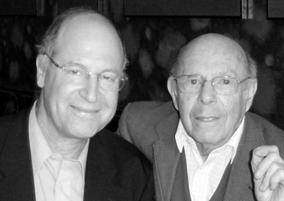
Professor Gideon Greif is the author of an acclaimed book “We went without Tears: Testimonies of the Jewish Sonderkommando in Auschwitz”.
With so many Holocaust Survivors in Melbourne he was able to collect additional facts about the Sonderkommando in Auschwitz and material for a book he is writing about Majdanek Concentration Camp.
He interviewed 16 survivors, 10 from Melbourne and 6 from Sydney.
Phillip Maisel, Head of Holocaust Testimonies Department, assisted him in his interviews with Melbourne survivors.
He found Professor Greif’s interviewing techniques were very insightful. Together with his detailed familiarity of historical events, he enabled survivors to tap into long forgotten details of events at these camps. The detailed interviews lasted for more than four hours.
DISCLAIMER: The opinions expressed in Centre News are those of the authors and do not necessarily reflect those of the magazine's editor or editorial committee. While the Centre News welcomes ideas, articles, photos, poetry, and letters, it reserves the right to accept or reject material. There is no automatic acceptance of submissions.
7
PROBLEMS IN POST-HOLOCAUST THEOLOGY
Summary of a course presented by Rabbi Fred Morgan, Senior Rabbi, Temple Beth Israel, at Holocaust Centre recently attended by Jews and non-Jews
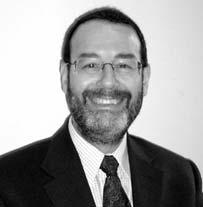
The discipline of theology asks what a theologian once called questions of ultimate concern: is there a God, what is the nature of God, how does God relate to humanity, why do bad things seem to happen to good people, what is the proper role of humankind in relation to the world around us, how should we lead our lives, is there some higher purpose or meaning to existence?
I’ve been interested in these sorts of questions for many years, but it’s only fairly recently that I’ve begun to realise the profound impact of the Shoah on theological reasoning. In the words of a leading Jewish thinker, the Shoah has ruptured the way we need to think about theological questions. Theological reflection after the Shoah must be different from the way it was done before the Shoah. Yet, remarkably few theologians have taken the Holocaust seriously in their work.
Theological topics are not easily dealt with in the light of it. It is generally easier to ask historical, political or even psychological questions about the Shoah. The work of the Holocaust Centre is a case in point. Until I offered my course on the theologies of the Shoah (midyear, 2006), the Centre had focussed on historical and psychological research. It seems that my course “Problems in Post-Holocaust Theology” was a ‘first’ for the Centre.
This reticence is not surprising. Theological reflection requires emotional distance, and it is not clear that we have reached that point vis-à-vis the Shoah even now. It took nearly 20 years before the first truly theological responses to the Shoah began to appear in print. They tended to build on the ‘witnessing’ of authors like Elie Wiesel, who is not a theologian but raised theological questions in his autobiographical novels.
The first generation of post-Shoah theologians provided the primary materials that we used in the course. These theologians included Richard Rubenstein, Emil Fackenheim, Eliezer Berkovits and Yitz Greenberg. These thinkers represent a wide range of opinions on all of the topics we covered, but they have one feature in common. They all treat the Shoah as unique, in the sense that any future understanding of theological issues had to take it into account.
The course introduced three major topics: problems in thinking about God after the Shoah, challenges to Jewish identity after it, and Israel and the Shoah from a theological perspective. Each topic covered two sessions, the first an overview that aimed to open up the key questions, and the second looking at how the key questions are played out in the classic texts of postShoah theology. The group was encouraged to raise their own issues and to dispute with the authors we
were reading.
The first topic dealt with how we think about God after the Shoah. It took as its departure a challenging scene from Elie Wiesel’s novel Night, in which a boy is hanged before the camp inmates, and the narrator answers the question, Where is God now?, with his unspoken response, God is here, hanging on the gallows. In this scene Wiesel raises the key question, Where was God in Auschwitz?
Richard Rubenstein, an American Rabbi who was “amazed” at the failure of Jewish thinkers before the 1960s to deal seriously with the Shoah, answered Wiesel’s question in his book After Auschwitz Rubenstein argued that the belief in a God who intervenes in human affairs to protect the good and punish the wicked “died” in Auschwitz, leaving us in a world that is cold and brutish.
Redemption cannot come from God, since that sort of God cannot exist in the face of Auschwitz, even in the human imagination. On the contrary, redemption must come from human action. It is our responsibility to make a better world by resisting the kind of evil that led to Auschwitz. God exists only in a mystical sense, as ‘that without end’, or ‘divine Nothingness’ (‘ayin in Hebrew).
614TH COMMANDMENT
Other theologians reacted strongly against Rubenstein’s “God is dead” theology. For example, Emil Fackenheim portrays God as the antithesis to Nazi evil: whatever the Nazis stood for, God stands for the opposite. Out of this mythic (or, as Fackenheim puts it, “midrashic”) reasoning comes his “614th commandment”, to avoid giving Hitler a posthumous victory.
Since Hitler sought to destroy every Jew, it becomes our obligation to keep Judaism alive by surviving as Jews. In his later writings, Fackenheim associates this argument with support for the State of Israel, which represents the survival of the Jewish people.
Another major thinker, Eliezer Berkovits, adapted from Jewish tradition the metaphor that God’s “face was hidden” (hester panim) in Auschwitz. As Joseph Soloveitichik explained in an important essay based on the Biblical image of “the voice of my beloved knocks”, what this metaphor means is that often we sense God just out of sight on the other side of the door, but whenever we open the door for a look “my beloved” has apparently disappeared. This is the nature of our relationship with God in exile (galut), culminating in Auschwitz.
Berkovits goes on to argue that there were no “sinners” in Auschwitz; all Jews were kedoshim, holy ones, because they were destined to be killed simply for being Jews. The effect of this is that they all performed kiddush haShem, the glorification of God’s name, even if unwillingly or unwittingly. This was unique in the history of Judaism.
8
Rabbi Fred Morgan
POST HOLOCAUST
The second topic we discussed had to do with Jewish identity after the Shoah. Here we focussed on the notion of covenant (brit), the traditional way of expressing the relationship between God and Israel, and we asked whether there is any meaning to the covenant after Auschwitz, or whether the covenant has been effectively abrogated by God’s failure to save the victims of the Shoah. People like Richard Rubenstein, who finds plenty of support from anthropology and psychology for maintaining a Jewish lifestyle without accepting the theological meaning of the covenant.
A different approach is that of Rabbi Yitz Greenberg, who links his notion of the covenant to three great eras in Jewish history. The first era is that of the Biblical period. In this era the covenant is involuntary; it carries all the weight of the Sinai experience, and God’s validating presence is felt immediately by the people through the Temple in Jerusalem. This era came to an end with the destruction of the Temple and the exile of the Jewish people.
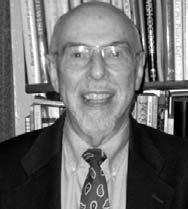
The rabbis teach that God’s presence also went into exile, which means that though God plays an active role in the lives of the people through prayer, study and the performance of mitzvot, God can no longer be described in any meaningful sense as rewarding or punishing the people. In the rabbinic era, the covenant is portrayed as a partnership between God and the people; if the people do God’s will, then God is felt to be present, as it were.
Yitz Greenberg’s theory of three great eras in Jewish history led us to the third topic of the course, the theological relationship between the Shoah and Israel. Here we contrasted the thinking of secular Zionism with the outlook of religious Zionism; whether the aim of Zionism was to give the Jews a state like other peoples and so remove their distinctiveness (their covenantal chosenness), or to act in partnership with God to bring about the redemption of the Jewish people by restoring them to their ancestral homeland. Both secular and religious Zionists stand apart from those ultraOrthodox such as the Neturei Karta who actively resist the modern State as a theological abomination.
We looked at essays by figures such as Joseph Soloveitchik, Michael Rosenak and David Novak, who struggle to make sense of Israel as a modern miracle, without falling into the ‘traps’ of over-literalistic fundamentalism on the one hand and secular humanism on the other. We also considered the provocative work of Yeshayahu Leibowitz, who combined secular Zionism with Diaspora rationalism by arguing that there is no theological meaning to Israel whatsoever. According to Leibowitz, the State of Israel fulfils its role by being a secular democracy, while the religious life of the Jew consists of observing the mitzvot, and the two inhabit totally different domains of thought.
I would be happy to run the course again in the future. If you are interested call Bernard Korbman at the Holocaust Centre, 9528 1985.
THE ASSOCIATION OF HOLOCAUST ORGANIZATIONS
The Association of Holocaust Organizations (AHO) (the Jewish Holocaust Centre is a member) was established in 1985. Its purpose is to serve as an international network of organizations and individuals for the advancement of Holocaust programming, awareness, education and research, said President of the Association, Dr. William L. Shulman, who is Professor Emeritus of History, at City University of New York.
Among its functions and services are: annual conferences held every June, a winter seminar at the United States Holocaust Memorial Museum held every January, a listserv for members, a guide to curriculum evaluation, and a website www.ahoinfo.org. There are also regional branches which meet independently.
The AHO publishes an annual directory of its membership which is intended to facilitate the aims of the organization. It is distributed, free of charge, to all
organizations and individuals who can make use of the information which it contains. The 1988 AHO Directory listed 48 members, the 2006 AHO Directory lists 243 full and affiliate members, 61 from outside the United States. The AHO also has 47 individual members who are Holocaust scholars and/or educators.
The AHO is governed by a nine-member Board of Directors, which is elected by and from the membership at is annual business meeting. The term of office is two years. The AHO is run on a volunteer basis. Membership dues cover the expenses of the organization.
The 21st annual conference this year (2006) was held at the Center for Holocaust and Genocide Studies at the University of Minnesota.
Topics included: How Artists Deal with the Holocaust, Holocaust Education in Sweden, The Holocaust and Film, Theatre and the Holocaust, The Relevance of the Holocaust to Teaching Current Issues and Voice to Vision, a project involving interviewing Holocaust survivors and creating art in a studio environment with students.
If you would like details about sponsoring or advertising in an issue of Centre News, contact Betty Lederman on 9528 1985.
9
Dr. William Shulman
SEMINAR WITH INDIGENOUS COMMUNITY

silent on the issue. Aborigines delivered a letter to the Germany consul, to be sent to Hitler, complaining about the persecution of Jews in Germany and what occurred on Kristallnacht in Germany and Austria. It was an amazing gesture against racism by an Australian group, reported in the Melbourne daily press.
Plaques at the Centre commemorate the 1938 event and that the Centre is on Koorie land.
Koorie students from the Royal Melbourne Institute of Technology and Jewish concentration camp survivors met at the Holocaust Centre in October to discuss the experiences that the two cultures have in common. They conducted a community forum on 'Surviving Genocide', in collaboration with RMIT University.
Indigenous Diploma of Community Education students heard moving testimonies of two Holocaust survivors relating their harrowing experiences at the hands of the Nazis and their collaborators.
Student Koora Cooper chaired a panel of Indigenous speakers discussing how Jews and Koories faced common issues in their struggle against racism and in surviving genocide.
Indigenous participants discussed the impact of being made non-citizens in their own lands, being dispossessed of their land and the effect of such trauma has had within families over generations.
Ms. Cooper was presented with a certificate of appreciation for the role of her ancestor, William Cooper, in speaking out against the persecution of Jews in Germany in 1938, a time when the world was largely
VOLUNTEER’S COMMENTS
Helen Leperere
Volunteer Helen Leperere sums up the meeting with the Indigenous community:
There is a plaque in our Centre which reads: “In Honour of those Aboriginal People, who in 1938 stood up and protested in front of the German Embassy against the atrocities and persecution of the Jews by the Nazi Government in Germany”. I have read it several times. How absolutely awesome. Of all the people in the world! Here, in this country so far removed from Europe, people who themselves were persecuted and mistreated had the courage to speak up. I do not know if Jews were very well known to them, but they protested against discrimination of innocent people. And now we were privileged to meet the descendents of those courageous people.
Like them, whose only crime is the different colour of their skin, so our only crime was to be born Jewish. We have so much in common. That is why this function was so very successful informative and moving. A few steps more towards building the bridges.
It was heart wrenching to listen to the moving
An emotional Ms. Cooper accepted the Centre’s award and stressed the importance of the role played by all the Indigenous community members who struggled for the human rights of the Jews as well as for their own people.
Faye Muir, a student, said of the forum: "It was a very powerful day and I commend (the Jewish elders) for speaking to us about their very personal stories. We weep with them and take much strength from them as well.
"They are a very special group of people and I thank them from the bottom of my heart ... for listening to our stories of injustice that we are fighting for still."
Dr. Paul Valent described the day as a very special occasion.
testimonies of our indigenous guests. The injustice of family separation, the stolen generation. Who else, but us can understand it better and feel their pain?
Dr Paul Valent’s speech was very moving, as usual. He spoke about transmission of traumas. Which again applies to the sad experiences of our indigenous guests, as we heard in their painful testimonies.
For a while it seemed to me that we are the silent bystanders just like the world was silent during the years of our tragedy. But then Shmuel Rosenkranz spoke how we – the Jewish Community - without any help form the Government established our own organizations, our own centres, our own self- help funds. And he called on our guests to try and do the same. Yet again a reminder of our true Jewish spirit.
The highlight of the afternoon, was the emotional debriefing initiated by our indigenous guests, when we all formed a circle and held hands. If only the world would follow that example. And so, I saw the function as an expression of our “Jewish Neshume” (Jewish Soul).
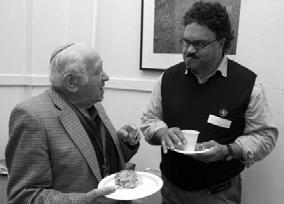
10
Koora Cooper, descendant of William Cooper, addresses
Holocaust survivor Arnold Erlanger & Eric Clarke of RMIT exchange ideas.
WHY YIDDISH?
Moishe Ajzenbud (Writer and editor of the Centre News’ Yiddish Section)
The distinguishing mark of a people is its language, one not spoken by another people. In the language is interwoven the way of life, the culture, that which marks Jews as a distinct group. The Yiddish language is the expression of Jewish communal existence.
The evolution of Yiddish began about a thousand years ago. Since our people appeared on the stage of history there hadn’t been such a large number of Jews speaking a common language. According to statistical sources there were in 1935 over 16 million Jews in the world, about 10 million of them spoke Yiddish, in Lithuania alone all Jews spoke the language.
Yiddish has been alive approximately for as long as Hebrew had been a spoken language (i.e. until the latter’s recent revival) and has been spoken longer than the other languages used by Jews (according to Max Weinrich). The proper name of the language mans in Yiddish – Jewish. Since the middle of the 19th Century the scientific literature about the language in English has been using the term Yiddish. It was passed into common usage in the English speaking world. Yiddish is a language for Jews.
The general outline of the historical development of the language is as follows:
Yiddish was born about a thousand years ago in the Rhine basin, from where it spread to the East, while covering south and central Germany, the alpine region, Bavaria, Moravia and moving into Poland and Lithuania. During the 15th Century it reached southern Italy, in the 16th – the Ukraine. In the 17th Century there already existed Yiddish-speaking communities in the Netherlands, northern Germany and Alsace. Although the area where Yiddish was widely spoken was in
Europe. It became an international language after the emigration to the New World.
Since World War II, when the survivors of the Holocaust were scattered all over the globe, they, and especially the second generation began adopting the languages of their adoptive countries, the influence of Yiddish diminished. However, the language is still the distinguishing mark of the people. Our non-Jewish neighbours, however, consider us as Jews, members of a distinct ethnic group, a people. Therefore it is still important to preserve Yiddish as part of the Jewish identity.
Moishe's book “Pnina” is dedicated to Bono Weiner, a founder of the Holocaust Centre and its second president and contains numerous short stories set in Israel, Poland, Russia and Australia. The character of the title is a young Polish born boy who settles on an Israeli kibbutz and falls in love with his teacher. The works indicate Moishe's perception, and of his writing skills in Yiddish and English, which have gained him a following in both languages. He was one of the early volunteers at the Holocaust Centre and contributed much towards its current standing in the community and internationally.
PNINA
Moishe Ajzenbud was born in Niewsvicz, Poland in 1920, and educated in a Yiddish secular school. He began to write in a displaced persons’ camp in Germany, where he spent four years after World War II. He worked as correspondent for a Paris Yiddish daily newspaper and was an active member of the Jewish Labour Bund.
He arrived in Australia in 1950 continuing his involvement with the Bund as well as following his interests as a novelist, short story writer, critic, editor and Yiddish teacher. In 1973 he received a Fellowship Grant for Literature from the Australia Council.
He has published more than a dozen books in Yiddish, three of which have been translated into English. He is one of Australia’s best known contemporary Yiddish writers.
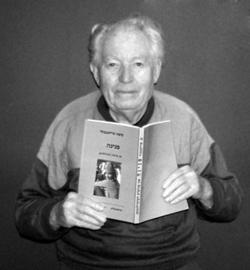
Don’t miss the chance to become a ‘Partner in Remembrance’ through the Jewish Holocaust Centre Foundation. Join with Steven Spielberg, one of the Foundation’s Patrons, and ensure the on-going success of the JHC.
Three levels are available and are payable over five years. All donations are fully tax deductible
Gold Partner $18,000
Silver Partner $10,000
Bronze Partner $ 5,000
Each ‘Partner in Remembrance’ will be acknowledged.
Further details available from Helen Mahemoff, Chair of the Foundation 9822 8080 or 0417 323 595
11
Moishe Ajzenbud with his book in Yiddish titled “Pnina”.
RECREATING THE VANISHED JEWISH WORLD
A rapt audience at the Holocaust Centre in October heard of the fascinating plans to reconstruct the lost Jewish world, the world of millions of Jews that was destroyed in the Holocaust.
Dr. Sallyanne Amdur Sack, one of the world’s leading genealogists, described this Project and Jewish genealogical research. Dr. Sack founded the Jewish Genealogical Society of Greater Washington, becoming its first president in 1980.
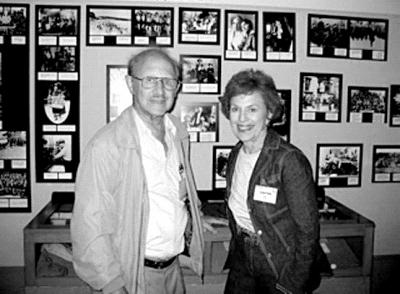
She has organised a number of US conferences on Jewish genealogy, and two international seminars in Jerusalem. She was the co-founder and editor (and still is) of “Avotaynu”, the International Journal of Jewish Genealogy. She founded the Avotaynu Foundation, a non-profit corporation developed to publish meritorious non-commercial genealogical reference works.
Dr. Sack said and has written that the Holocaust gouged a gaping hole in the 3,000-year chain of Jewish history. “We all struggle to fill in the blanks in our family tree,” she said. “Until now, Holocaust research properly has focused on trying to retrieve the names of the six million Jewish victims. The culmination of that effort is Yad Vashem’s database of more than three million names. Most come from Pages of Testimony submitted by relatives and friends.”
Dr. Sack explained how with the Yad Vashem database and its foundation, the new International Institute for Jewish Genealogy and Paul Jacob Jacobi Center, an academic research institute located at the Jewish National and University Library, Jerusalem, were undertaking its ground breaking Project to Reconstitute the Destroyed Communities of Europe. Ultimately it would create a database that included many more victims, their place in the chain of Jewish history and the communities in which they lived.
For all the millions immortalised at Yad Vashem, the IIJG proposed to create a family tree for each victim. In a way this would revitalise the victims’ memories by restoring them to the multi-dimensional Jewish genealogical chain of history. The proposal was to cluster the victims by place of residence.
ENORMOUS POTENTIAL BENEFITS
“In doing that, we may say that we have made a substantial, virtual reconstruction of the lost Jewish communities of Europe. With appropriate privacy
protection, all results will be posted free of charge on the IIJG website,” Dr. Sack added. “The benefits to genealogists of such efforts are obvious. The Institute also believes that such a database will have enormous value to sociologists, historians doing migratory studies and medical DNA research.”
Track one of the project was to generate individual family trees by using sophisticated, custom-built software on large databases. Track two, being carried out currently, focuses on three Jewish communities, Pusalotas, Lithuania; Ostrow Mazowiecka, Poland, and Zdunska Wola, Poland.
Dr. Sack said the plan was to recreate the web of kinship that existed among members of these communities just as they were destroyed. As most of us have discovered through our own research, our family trees seemed to resemble family bushes, rather than neat, straight line charts. Cousins wed cousins, uncles married nieces and, in small towns, people were related to one another in many ways and appeared on many family trees.
“Where possible, we will tabulate and illustrate those multiple relationships, showing how the Jews of these towns were all or almost all related to one another sometimes many times over,” she added.
Finally, the hope was that by posting all the results on the web, to dispel the still all-too-common belief among Jews of European ancestry that none of “my relative died in the Holocaust.” By bringing, trees to the present, viewers will see at a glance just who in their extended family perished. In all an exciting, revealing and rewarding program.

CONSIDER A BEQUEST TO THE CENTRE
Copies of a brochure explaining how to make a bequest to the Centre are available. After making provision for your families and other considerations, you may consider joining the increasing number of people who have, or are, considering providing small and large bequests in their wills to the Centre. This is a lasting acknowledgment of the Centre's work.
For further information call Elly Brooks Bequests Officer at 9528 1985.
12
Lena Fiszman, thanked Dr. Sallyann Amdur Sack, on behalf of the Holocaust Centre and all affiliated groups.
Lionel Sharpe, of the Jewish Genealogical Society of Victoria and Dr. Sallyann Amdur Sack.
INSIGHT INTO HOLOCAUST MUSEUMS OVERSEAS
 Jayne Josem, Curator
Jayne Josem, Curator
interesting CD Roms, such as one providing information and photos on French concentration camps. The museum is dense with photos and captions so one needs many hours to take it all in. Thankfully there are stools scattered around because it is tiring to stand around and read. The museum ends with a moving “Memorial to the Children” containing thousands of photos of French children who were deported, so that an entire room is filled from floor to ceiling with their images.
INVENTIVE EDUCATION PROGRAM
With the financial assistance of the Friends of the Jewish Holocaust Centre, I was able to conduct a study tour of Holocaust Museums in Europe, in order to learn about trends in presentation of the Holocaust, establish dialogue with museum professionals, hear about their educational initiatives and gain new ideas.
The Imperial War Museum in London has an extensive Holocaust exhibition. It is impressive to see a national institution devoting so much finance, energy and intellect into educating the public about the Holocaust. They are strong on displaying the evidence of Nazi crimes and establishing the background to enlighten visitors on how the Holocaust could have happened. Their intention is to make visitors think rather than overwhelm them with emotion. In terms of education, they have designed audio guides for different year levels, as well as for students with learning disabilities and the visually impaired. They base educational programs around items on display and make the students consider what lessons we can learn from objects.
I spent a most enlightening afternoon at Beth Shalom, the Holocaust Centre established in the countryside of Nottingham by two Christian brothers. This Centre is similar to ours, in terms of being primarily a destination for school excursions featuring talks from Holocaust survivors. Their permanent exhibition is a bit larger and more professional in its design than ours. They are in the midst of developing an exhibition space especially for upper primary school students, following which they plan to overhaul the museum. The major difference to our Centre is their strong commitment to genocide watch in today’s world, something we might be able to pursue into the future.
In Paris I was impressed by the lavish new Memorial de la Shoah, the largest research and information centre on the Holocaust in Europe. Their research facilities are excellent, and particularly their multi-media centre. As for their detailed exhibition, they fill the space with layers of information that visitors can choose to access or not. There are computer terminals scattered around for visitors to view
In Amsterdam I went to a small exhibition and memorial at the Hollandsche Shouwberg, the Dutch Theatre which was the site the Jews were taken to before being deported to Westerbork and beyond. They have an inventive educational program as well as a neat little display which is low-budget yet wellpresented. It is unique in that it contains no text. The text is provided in a small booklet that visitors can take home.
What impressed me most at the Anne Frank House in Amsterdam is the interesting approach they are taking to use Anne’s story to engage teenagers. At present they have a thought-provoking multi-media display called “Free 2 Choose” where viewers are presented with real world moral dilemmas based on issues of freedom of speech and human rights and then are asked to vote ‘Yes’ or ‘No’ via buttons placed around the room. As an example one issue was whether Neo-Nazis should be allowed to march past a synagogue. Votes are automatically tallied up and a pie chart appears on screen summarising the responses of people in the room and then of overall visitors to the museum. They have also created a travelling exhibition called “Anne Frank and You” which is about teenage identity issues and is presented in a style and language appealing to that age group.
The Jewish Museum Berlin’s special quality is in the Daniel Libeskind-designed building, so while it was a powerful and unforgettable experience, for our museum it offered little. The Memorial to the Murdered Jews of Europe with its underground information centre has more relevance to our Centre. Although its design is very modern, the principles behind the displays are basic. It begins with a detailed timeline of 19331945, complete with powerful imagery. This is followed by a room filled with copies of written eye-witness testimony – diaries, letters and other documents –evidence of the crimes. The next room traces the fates of 15 families, using photos, documents and maps to show their journeys. Another room is stark save for a person’s name projected on all four walls and a voiceover detailing their short life story, one after another, story upon story. A final room provides information on the many sites of persecution of Jews. The presentation is subdued and dispassionate but compelling.
In Copenhagen the new Danish Jewish Museum, built inside the Danish Royal Library, with an interior designed by Daniel Libeskind was an uplifting experience. It is a beautiful little museum, cleverly designed and
13
“Memorial to the Children”, Memorial de la Shoah museum, Paris.
user-friendly. Its size is appealing, for it contains enough material to keep you engaged for about one hour, yet not so much as to be overwhelming. The information is neatly presented and the cases are filled with interesting artefacts and clear captions. Libeskind designed the
space around the Hebrew word “Mitzvah” meaning “good deed”, reflecting the fact that the Danes saved nearly all their Jews.
A general observation is that most museums discuss anti-Semitism in more depth than we presently do.
CO-PRESIDENT VISITS BERLIN
Three generations together at the entrance to Daniel Liebskind's Berlin Jewish Museum. Pauline Hammerman Rockman, Jordana Bekinschtein and Julian Bekinschtien travelled to Berlin to attend the Theodore Herzl school reunion of Pauline's late father Michael Adi Hammerman.
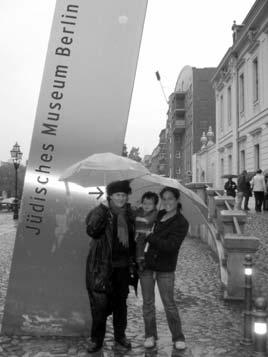
Preparations are currently underway for the 4th Australian Adult March of the Living (AMOTL). In 2007 the journey will commence in Berlin. Germany is our starting point, the birthplace of Nazism and then we travel to Poland, and then to Israel.
SOUTH AFRICANS CENTRE EVENING
survivors talk about their experiences that was the catalyst to her contacting the Centre and, with its agreement eventually inviting many people to a function there.
About 150 people attended what was a memorable evening. Many thanked her over the next few weeks for what was a very special – an amazing – experience.
Mrs. Sacks stressed that the evening’s real impact was captured in a letter a South African wrote to his children about the event.
One hundred and fifty South African migrants recently attended what has been described as “an amazing evening” at the Holocaust Centre.
It stemmed from the suggestion of Barbara Sacks, after she heard Holocaust survivors speak as panelists at Limmud Oz. These panelists, Kitia Altman, Sarah Saaroni, Eva Marks, George Ginzburg and Abraham Biderman told of their Holocaust experiences in Germany, Poland, Vienna, concentration camps and the Siberian Gulags.
Mrs. Sacks explained that she had not been intimately involved with Holocaust survivors until she came to Melbourne more than four years ago. When she met some, she recalled hearing her grandmother talking about Hitler and the Nazis murdering her family.
In South Africa she had read a number of books and seen movies about the Holocaust, but they did not play a major role in her life. It was at Limmud Oz hearing
Mr. Rakusin wrote: My Darling Children, last night , Mom and I were privileged to be invited (by our good friend, Barbara Sacks) to the Holocaust Museum to listen to Holocaust survivors relive their experiences and describe what happened to them and their families during this terrible time. It was a very emotional experience for all of us, and I wept when they told of their personal stories.
Of the fear and heartache of families being forced apart, young children separated from their parents without the opportunity to say goodbye, eight and nine year-olds growing up in one awful moment with their childhood gone forever. Children seeing their mother or father killed before their eyes, a baby strangled by her mother (to stop her crying) in order to save the lives of 100 people hiding in a cellar, and many other heart wrenching stories of unspeakable brutality committed against people whose only crime was that they were Jewish.
We were fortunate to be living in South Africa, far removed from the horrors of the war in Europe. Although we had heard stories and seen movies about the camps, we never really felt a personal involvement. But, as I listened to these intimate life-stories, I kept thinking about my grandfather, Avraham Shapske, and
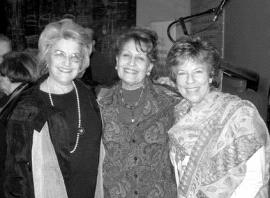
14
Barbara Sacks, Hilary Friedland & Irene Bacher.
my grandmother, Bussa, and my aunt Sarah and my uncle David Yankel and all the other cousins that I would never know.
What had they gone through and where had they died? My father Philip had tried to bring them all to South Africa in 1938 but the South African government had rejected their application despite guarantees from Zeida. Bobba Lieba had a nervous breakdown after I was born on the last day of 1937, and spent six months in hospital. I'm sure that it was because of what was going on in the 'heim'. She never spoke about it or about her family and I think she blocked it all from her mind. It was the only way she could cope.
Until last night I never considered myself a 1st or 2nd generation descendent of the Holocaust, but since listening to those wonderful people I realise that we are all descendants of the Holocaust. It is our Legacy. It was not about six million. It was about individuals, our families, our neighbours our friends. It was about us. The Jewish people. It does not matter whether you are religious or not, it is our story and we and our children and grandchildren should never forget. Just as we tell the story of Moses leading the children of Israel from Egypt during Pesach, so should we tell the story of the Holocaust and how our people survived.
CAPE TOWN HOLOCAUST CENTRE
teachers, 51,000 students and 15,000 adults.
The recent inclusion of Holocaust history in the new South African Social Sciences (History) Curriculum for Grade 9 and 11 has seen a significant development in the education programmes conducted at the Cape Town Holocaust Centre. In liaison with the national and provincial education departments, the Centre is providing much needed support for high school teachers and learners throughout the country.
Teacher-training workshops are conducted both at the Holocaust Centre and off-site at regional venues in the Western Cape. The Centre has also recently conducted a pilot workshop for senior educators in the KwaZulu-Natal province. Further provincial workshops are planned.
The Cape Town Holocaust Centre, the first and only Holocaust Centre in Africa, opened in 1999. The Centre features a permanent exhibition on the history of the Holocaust combining text, archival photographs and film footage, documents, multimedia displays and recreated environments.
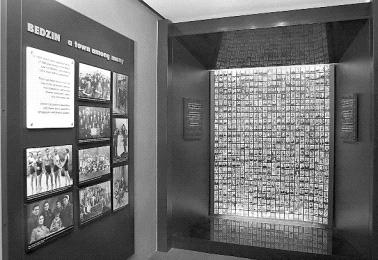
The display also includes sections on the pseudo science of race, the roots of anti-Semitism and the institutionalized racism of apartheid. A photographic display and 20-minute video tell the story of survivors of the Holocaust who made their home in Cape Town.
The Centre has been acclaimed by visitors as being “brilliantly and movingly put together ….a sobering reminder of the disastrous consequences of prejudice, racism and discrimination.”
EDUCATION PROGRAMMES
It conducts education programmes for a broad spectrum of South African people including high school teachers, university students, police and correctional services personnel, corporate groups. Participants learn about the Holocaust and explore issues of racism and discrimination and the importance of human rights and respect for diversity. Over the past seven years the Centre has conducted programmes for some 3,500
The Centre has produced support material for teachers and students. The Holocaust: Lessons for humanity includes a poster series, an activity workbook for learners, an introductory video or DVD and a teacher’s resource manual.
I was extremely moved by the whole programme. I have decided to make a change in my life by acting against racism and intolerance and stamping out the last bits of prejudice that years of ‘propaganda’ have imprinted on me.
Hugenote High School
I hope that every student in our society will have the opportunity to come to the Centre. It is more than a history lesson but a way of thinking that is taught here and that should be adopted by everyone if we want to live in a country free of racism and prejudice. It was a life changing experience. Westerford High School
Excellent. A topic that could be conveyed in an emotional way was dealt with in an intellectual and superbly informed manner. Valuable lessons were learnt and I wish every South African could experience this in order for us to gain insight into human rights issues. Family Advocates & Prosecutors
A really marvellous programme and presentation - very helpful for the healing of memories. I found it very insightful and awareness raising about pertinent issues of prejudice and racism. Clinical Pastoral Education Training Centre Groote Schuur Hospital.
Email the Centre at: admin@cttholocaust.co.za
15
Cape Town Holocaust Centre
NORWAY’S HOLOCAUST MUSEUM
series of empty chairs, reflecting the idea of “absence.”
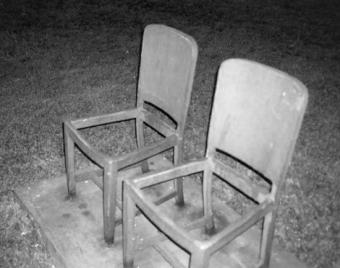
Another memorial in Tromso, a city above the Arctic Circle, commemorates the taking of 17 Jews from the area to Auschwitz in 1942.
Seven women who risked their lives to save 14 children from a Jewish children’s home in Oslo were honoured as Righteous Among the Nations at an August ceremony. The children are all alive, with five attending the ceremony. Only one of the rescuers, Ola Breisjoberget is alive. The recognition gives an insight into the little known and amazing stories of resistance and assistance by Norwegians. The Norwegian story is not just the Quisling one. It is one of courage shown by many Norwegians in assisting Jews, especially the children against horrendous odds.
In an ironic twist the villa of Vidkun Quisling, executed in 1945 after leading a puppet Norwegian government that supported the Nazis, has become a Holocaust museum.

It houses the Center for Studies of the Holocaust and Religious Minorities. Inaugurated by Norway’s Queen Sonja and Princess Mette-Marit, the renovated villa was presented to the Jewish community by the Norwegian government.
Vidkun Quisling’s name has become synonymous with the word ‘traitor’. In the 1930s he founded a Fascist party, which received subsidies from Germany. Following the German occupation of Norway in 1940, Quisling’s National Union party was made the only legal party. Quisling was installed as prime minister in 1942. During the war he collaborated with the Nazis. He was tried and executed after the war.
An estimated 800 Jews, approximately half of Norway’s pre-war population, perished in the Holocaust, more than 700 in Auschwitz, with only 25 surviving there. The Jews who managed to escape to Sweden, remained there until war’s end. More than 100 Jews served in the Free Norwegian Forces, mainly in England. Some claim that Quisling’s actions encouraged resistance to the Germans among Norwegians.
After 1945, some Jews returned to Norway. It was in the late 1970s that a revival of the Jewish community started, with around 850 Jews in Oslo and 100 or so in Trondheim.
The Center for Studies of the Holocaust aims include contributing to new research, education and information, exhibitions, conferences and a special library. A basic aim is to be a meeting place for a diversity of discussions, especially religious, racism, genocide and violations of human rights. There is a focus on minorities and their roles within a multicultural society. The history of the Holocaust is a major feature of all activities and also of past and current forms of anti-Semitism. It ensures the relatively little known story of Norway’s Jews is given its rightful and wider position in the whole European story of Jewry’s horrendous sufferings.
There also is an Oslo Holocaust Memorial, on the south side of the Oslo Fjord, near where the ships carrying Jews sailed to concentration to camps. It is a
Jonas Gahr, Norwegian Minister for Foreign Affairs, said that genocide, both as an idea and as a system, begins elsewhere. It begins in people's minds. It develops in buildings, where people are going about their everyday lives.
“The Holocaust was not a natural disaster. It was an atrocity created by people. And its horrors were perpetrated in our country as well, by ordinary people with ordinary lives. It was done under German occupation," he added.
Mr. Gahr said he would particularly like to pay tribute to those who have survived the concentration camps, all of those who have tirelessly borne witness, who have told us not only about their ordeals but also about the historical process that led to the Holocaust.
"You have been called to pass on your knowledge and your experiences, especially to young people to bring a new vision to Villa Grande and give its story a new direction.
"We are bringing a new message and desire to learn from the past, to shed light on the small streams that can run together to create a flood of man-made tragedy. We will continue to study the chain of events that led civilisation from indifference, discrimination and prejudice right to the edge of an abyss - even to genocide," Mr. Gahr added.
He said high quality research should not only illuminate the past, it should also - and this was far more difficult - shed light on our own time, and help us to understand what was happening now before it was too late.
16
Center for Studies of the Holocaust and Religious Minorities — Vidkun Qusling’s villa.
Vacant chairs — sculptures by British artist, Anthony Gormley.
THE MAGICAL WORLD OF SARAH SAARONI
Stan Marks
Let me introduce you to the wonderful world or worlds of Holocaust Centre guide Sarah Saaroni. A determined, energetic and philosophical lady who believes that it is never too late to follow a cherished childhood ambition. If you will and work for it, it really need not be just a dream, even if a world war and a Holocaust intervene.
Magical worlds recapturing the life of Europe’s shtetls, of vanished Jewry, of the Holocaust, musicians, orchestras, the ballet, nature and an engaging array of characters. Life as it was and is - a realistic smorgasbord of the world and daily life past and present. A world through the penetrating eyes of a woman who has embraced life in its many aspects.
Sarah is an award-winning sculptor, whose works in bronze, terracotta ceramics, concrete and other materials, are found in galleries and private collections in Australia and many countries, including Israel, England and France. Some of her Holocaust works are on view at the Holocaust Centre, attracting much attention from students and visitors alike.
She fashioned a fascinating bronze of a baby and of Janusz Korczak, who looked after orphans in the Polish ghetto and went to his death in a concentration camp with them. Her work “Out Of the Ashes” has also been highly praised.
As one youngster said, “An insight into a lost world.”
Her intriguing 19 piece orchestra, including a conductor and musicians with their instruments, was on display in the foyer of the Victorian Arts Centre for six weeks, attracting widespread interest and comment, especially about how the characters gave a feeling of action, of movement and of actually playing. They could almost hear the players airing a Mozart work.
Well-known curator Frank van Stratten described her talent as “incredible” and, when the orchestra was shown at the Arts Centre after having had only a few years’ experience as a sculptor, as “remarkable”.
As a youngster Sarah dreamt of becoming a sculptor, of capturing the world around her, especially the men and women of her native Poland. But the war intervened. In 1939 she lived in Lublin, at first in the ghetto and then in hiding.
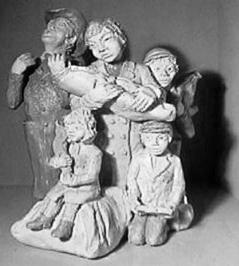
ESCAPED TRANSPORT
By mid 1942, she was separated from her family and assumed a Christian identity. Working in Hamburg for the Germans she was betrayed and interrogated by the Gestapo. She escaped, was interrogated again and jailed. However, in 1943 she escaped from a Majdanek bound transport, and worked under a different name near Dresden. Sarah, like Holocaust survivors generally, grew up quickly, learning how to survive while on the run, making instant life-saving decisions.
She was liberated in spring 1945. She returned to her native Poland, and discovered none of her family survived. She went to Israel where she married and had a son and daughter. The family decided to join Sarah’s brother whom she discovered survived the war
in Russia and settled in Melbourne. Finding a relative thought no longer alive has happened to more people over the years.
Making a living became paramount and Sarah’s ambitions to become a sculptor took a back seat until 1981, when life became less demanding. After a few lessons with a well-known sculptor and then a short period with another, Sarah decided to go her own way. Within a short period she gained acknowledgment, including winning first prize at the Royal Melbourne show and an award at the Spoleto Piccolo exhibition.
Her early work was mainly terracotta and clay figures, depicting her early Polish childhood. But gradually she became interested in aspects of Australian life, capturing a diversity of Australiana in her captivating works.
Sarah also joined the Centre as a guide.
“After 45 years of silence, I share my past with students, trying to educate them, making them understand what really happened and can happen any time anywhere to anyone if they allow it to happen,” Sarah said.
She added that one day all the survivors will be gone, but their art will survive, the paintings, sculptures and books reminding people of the dark ages.
“Art must talk to you. Look at the works of famous sculptors. They are realistic, they talk to you and you can hear and see,” she said.
Sarah has written a book “Life Goes On Regardless”, published by the well-known Hudson publishers.
Reviewer Doris Leadbetter has written the facts are stated, the blows in the face, the hunger, the degradation. An eye-witnesses account of history.
Sarah said that when she completed the book, she felt free and for the first time realised that she could lay her past to rest and speak openly about her experiences without breaking down.
And the book will probably be made into a Hollywood film, with a first script already written. It is an exciting time for the sculptor and writer. Drop into the Centre and see her works, making a visit doubly enlightening and rewarding.
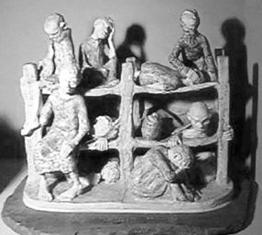
17
Sarah Saaroni’s sculptures at the Centre.
MEMORABLE AUCTION RAISES OVER $120,000
As co-president Shmuel Rosenkranz explained, “It was a wonderful all round effort, and one of which we can be proud, not only as a fundraiser but as first rate public relations and understanding of the Centre’s work over 22 years. It was outstanding. I congratulate all involved. Especially the convenors Helen Mahemoff and Elly Brooks.”
There was much animated bidding for the wideranging goodies, including a huge wurst, which brought $11,000. Auctioneer was Rod Morley, MC Steve Bedwell and music Segal and Glass. Speakers were Belinda Raffa and Maria Lewitt.
In what has been described by many of the 450 guests as “a night to remember”, the first ever auction dinner to support the Centre, held at Leonda, raised more than $120,000.
Monies raised from the evening will be allocated to a project “Keep The Voices Alive”, a specially-created audio-visual installation of the survivor volunteers. This is a major initiative to ensure that the stories of the Centre’s survivor guides have told students and visitors remain part of the Centre. The auction dinner was a combined effort by The Holocaust Centre, The Foundation and Friends.
PRINCIPAL AUCTION SPONSORS
Peachtree Capital Pty. Ltd. and The Rosshandler Family
MAJOR AUCTION SPONSORS
Arnold Bloch Leibler, Deloitte, Highpoint Property Group, River Capital, Roger David, Spotlight and The Majtlis Group
AUCTION DONORS
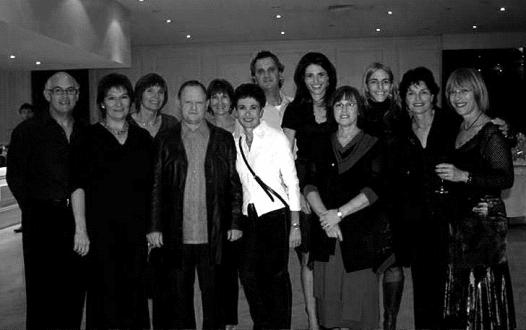
A Perelberg and David East Jewellers
ABN Amro Morgans
Acacia Experience
Acumen Gentlemen's Outfitters
Adam Kreuzer
Airport Luggage
Albi Imports
Animaland
Antique Silver Company
Ashwood Day & Night Pharmacy
Astoria Honda Centre
Astoria Paper Products
Australian Jewish News
Baggy's
Bakpakka
Berkowitz Furniture
Bobbleart
Bonbons Café
Borin Bridge Club
Brighton Chocolates
Café Dizingov
Cairns Pacific International Hotel
Cake Indulgence
Cambridge Cellars
Caroline Bryce
Cash Resources Australia
Charles Leski Auctions
Chef's Hat
Chelsea Girl
Cinema Nova
Clothes Plus
Continental Kosher Butcher
Coochi-Coo
Craig Opie- Tramcar Restaurant
Creswick Woollen Mills
Crown
Dan's Plants
DebbieK Nails
Debra Olenski
Deva Shoes
Dion & Sandy Abrahams
Dr Joseph Brown
Dr Ruth Paluch
Edna's Place
Eli & Lorraine Raskin
Elly Brooks & Davies Collison Cave
ESAS Men's Wear
Espresso, Etc
Esta Edelsten
ETM Travel
Executive Concepts
Feedmee
Festival of Jewish Cinema
Finemark Homewares Pty Ltd
Fini Frames
Flowers From Gan Eden
Fox Family
Frankel Salon
G.P.I. Group
Gabee Products
Gale Dog Training
Gold's World of Judaica
Graham Smorgon
Grossi Florentino Restaurant
Hair Body and Soul
Hairhouse Warehouse
Hasifria
Healthy Balance Fitness
Hollywood Cutters
Homeport
ICMI Speakers & Entertainers
Import Australia
Jack & Judy Kluska
Jaly & Co
JBM Art Consultancy
Jeffrey & Helen Mahemoff
Jess Bialek Photography
JR/SIT- a Division of The James
Richardson Group
Judy & Michael Krape
Kathy Alpar-Altman
Kez's Kitchen
Korimco Toys
Lava 219 Expresso
Lenny's Deli
Lexus of Brighton
Life Specific Training
LifeFX Store
Lionel Meerkin
Lisa Farber
18
Committee: John Rochman, Helen Mahemoff (Convenor), Julie Blashki, Michael Krape, Linda Edwards, Judy Dodge, Michael Sput, Monique Szer, Silvana Layton, Amanda Miller, Judy Rogers, Elly Brooks (Convenor) – missing Kim Richwol.
Lola Palooza
M Bar Restaurant
Mark Liberman
Max Grundman of Maxwell & Williams
McCluskys Lawyers
Meera Freeman
Metro Jewellers
Michael Klinger
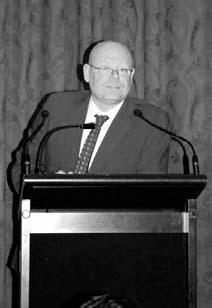
Michelle Herskope
Mighty Music Machine
Mike & Jack Pty Ltd
Mink Jewellery
Mumma Mia
Natalie King, Hayley Smorgon & Gaye
Weeden
Nicepak
Nina Maaya
Nova Pharmacy - Malvern
Orquestra
Parallel Lines
Personalizations
Perugia Ladies Boutique
Peter & Elaine Smaller
Pino's Fruit Supply
Playful Parenting
Prahran Health Foods
ProLine/Shark Golf
Pulse Pharmacy Armadale
Punt Hill Apartment Hotels
Raizon Sisters
Readers Pty Ltd
Re-Creation
Ripe Maternity Wear
Robert & Dorothy Sofer
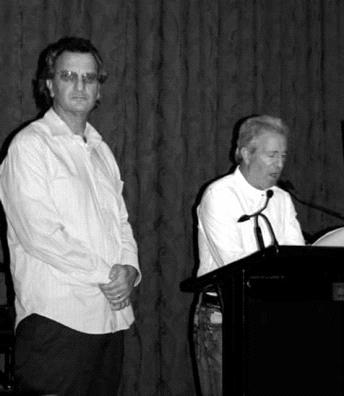
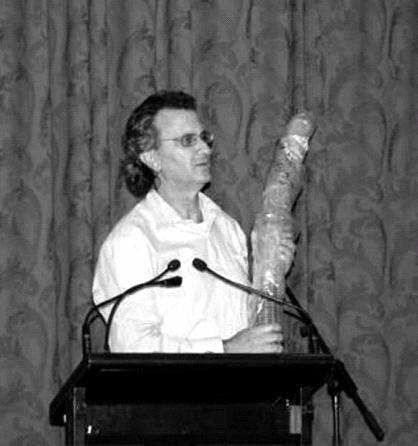
Robin Rosenblatt
Rococo
Rodney Edelsten
Ron & Sue Rogers
Rossini's
Royce Hotel
Salon M
Salon S & M
Shareen Joel Design
Sharmill Films
Silvana & Richard Layton
Simeon's Florist
Sioma Wajchman
Volunteers who helped make the event the great success it was:
Sir John's Gifts
Spa 2 Go
Studio MG
Sue Lewis
Sunflower Books
Sunraysia Natural Beverages Co
Susman Furniture Accessories
Tangerine Dreams
Team Zone
The Australian Ballet
The Dunes Golf Links
The Footy Show
The Gordon/Frost Organisation
TIG Group Pty Ltd
Toga Hospitality
Tollhurst Noal
Tonic Beauty Products
Universal Gifts Traders
Universal Leather
Village Roadshow
Vision Now
Voyager Travel Corporation
Zilberman & Norich Families
Nicky Arbib, Anita Bartfeld, Nicky Blashki, Daniel Brooks Reid, Eli Butbul, Aviva Feiglin, Caroline Gurvich, Brett Herskope, Natalie Krasnostein, Adam Kreuzer, Debi Layton, Michael Liberman, Gustavo & Lindy Lifszyc, Melanie Lipson, Toby Mac, Kim Richwol, Dave Rood, Davinah Schwarz, Debbie Schwarz, Melanie Scholl, Michael Sion, Melanie Sput, Nikki Sput, Kim Stub, Romy Susskind, Lainie Weniger, Laura Williamson, Olivia Winograd.
WHAT THE HOLOCAUST MEANS TO ME
Belinda Raffa
Belinda Raffa, lawyer, who as an 11-year-old created the book “Mishka” in 1993, spoke at the auction of what the the Holocaust meant to her and how she came to write the children’s story, now on display at the Centre. Belinda dedicated her book to Eva Slonim and all the Jewish people, especially
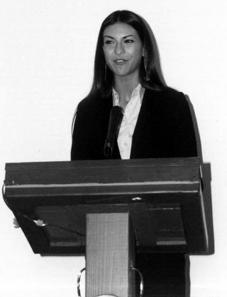
the million and a half children who perished in the Holocaust, and those children who endured and survived the horrors.
It’s hard to believe that 14 years ago, I first heard the story of Eva Slonim, a survivor of the Holocaust. I remember it as though it was yesterday, but more importantly I will never forget the way I felt as I hung on to each and every word of Eva’s story of survival.
Being raised in a non-Jewish family, this was really the first exposure I had to the Holocaust and I don’t think I have ever felt so emotional as I did that night. I suppose that the main reason for this was because Eva was just a young girl like me when her world was turned
19
MC—Steve Bedwell.
The “Wurst” and Michael Sput.
Michael Sput and Auctioneer, Rod Morley
Belinda Raffa
upside down, and it was impossible for me to fathom or to even begin to understand how this young, innocent girl and millions of children like her suffered and perished in the way they did.
At 11 years this led me to ask questions. I wanted to know why entire families were torn apart. I wanted to know why Eva Slonim had to have such different memories of her childhood to me. I couldn’t understand and I wanted to know why.
Eva’s story was too important to forget. I learnt at that time that 1.5 million children perished in the Holocaust. I didn’t want these children and their stories to be forgotten either. So I decided to immortalize Eva’s story in picture book called “MISHKA” which I prepared as part of a school project. One thing was certain about what I wanted to achieve out of this project; I wanted my story and the message permeating it to be meaningful to other children my age and help them pass on the Holocaust’s message. In order to achieve this, I wrote the book through the eyes of a doll called Mishka, who stayed with Eva through it all.
Eight years after writing Mishka I was honoured that the Jewish Holocaust Museum and Research Centre in Elsternwick offered to give Mishka a permanent home in its newly established children’s room. Whilst Mishka has helped to provide thousands of children who walk through the Museum each year with an insight into this time in our history, it is really the work of the survivors and volunteers which I want to recognize tonight.
Each and every person who is part of the Museum
has dedicated their lives to increasing public awareness of the Holocaust and its continuing implications. I will always remember the friends I have made at the Holocaust Museum and Research Centre and the tremendous work they have done to ensure that the message of the Holocaust is kept alive.
Although our history cannot be changed, what we are left with is an acknowledgement of the wrongs humans can inflict on each other, and hope that we can learn from the ills of the past.
I am 25 now, and if there is one thing I have learnt from the Holocaust, it is that silence is the worst enemy of justice. I have learnt that although those willing to use their hatred to achieve their goals are few, if no one stands against them, they appear the majority.
Nobel Peace Prize winner and Holocaust survivor, Elie Wiesel, commented in 2005 at a special session of the UN which marked the 60th anniversary of the liberation of Nazi death camps that Western nations had had many opportunities to save the Jewish people but did not act. He said “This shameful indifference we must remember. For the dead it is too late, but it is not too late for today’s children”.
The permanent display of Mishka in the Holocaust Museum is really only the beginning of what I hoped to achieve as an 11 year old. This hope is reflected in the last line of my book: “Mishka, your story will be told.”
VOLUNTEER AUTHOR’S VISION
Maria Lewitt
Maria Lewitt, noted prize-winning author and Centre survivor guide, also spoke at the auction.
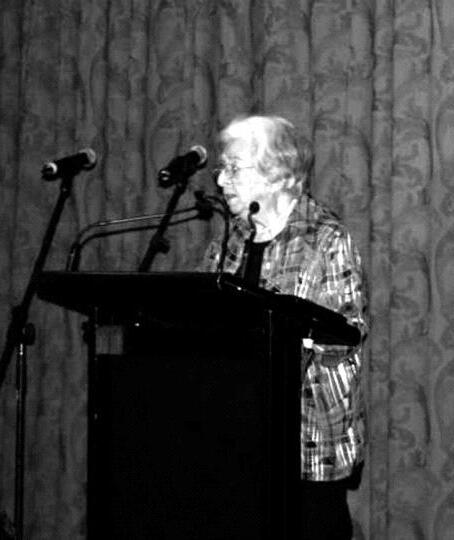
We are the leftovers of once vibrant Jewish Communities. Our association with the Holocaust Centre is of the utmost importance to us... even when we sometimes grumble.
Over 22 years the survivors' vision has grown into reality. The Holocaust Centre is a viable, well respected by the Australian Government, educational institutions, religious and secular communities at large.
The joint effort of all involved speaks for itself. Over the years approximately 400.000 Secondary Students have visited the Museum as well as many other visitors.
I tell students that none of us has chosen our parents, the country of our birth and the way we look. I urge them not to form closed circles. To communicate with diverse communities, because prejudices thrive on ignorance and on lack of communication.
What I often tell them are not only my own recollections but also fragments of precious memories of the people, who had also wanted to survive but perished taking with them their dreams. How incredibly rewarding is to see an understanding in the eyes of the students who often are the same age as we've been when the war started.
All who visit the Museum leave convinced that the Holocaust is the most shameful chapter in human history. They leave understanding that what is destroyed might be rebuilt with the exception of human
suffering. What might surprise them is that we don't hate because if we did we would have destroyed the rest of our humanity.
In this uncertain world of ours, we must never stop the dialogue with the mosaic of the Australian students. Unlike the mature visitors they are brought to the Holocaust Centre by their teachers. Looking at you I know that the future of the Holocaust Centre is in good hands. Good Luck!
20
Maria Lewitt
SEEN AT AUCTION—DINNER
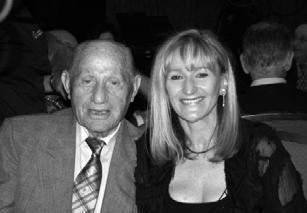
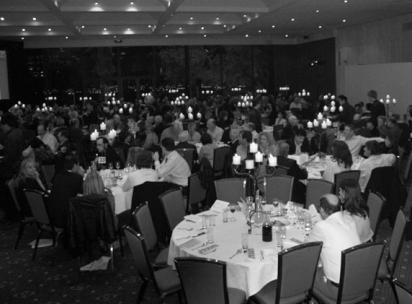
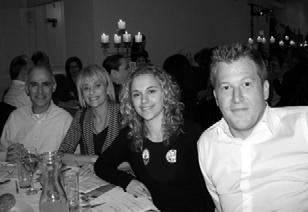
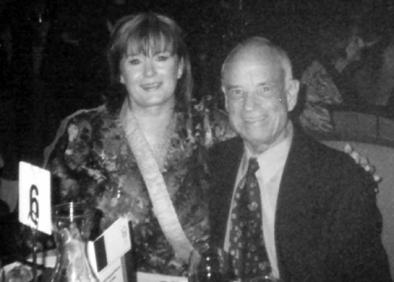
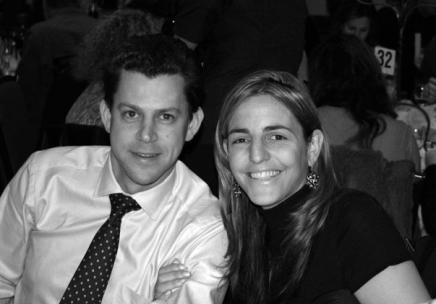

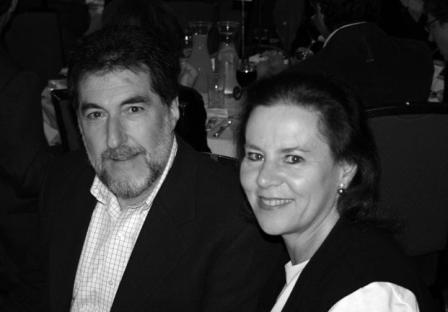
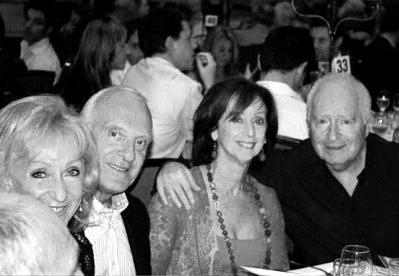
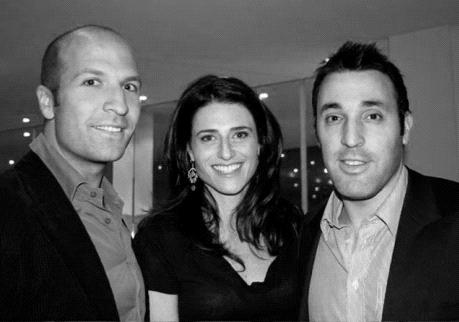
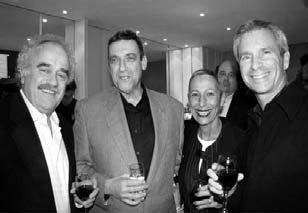
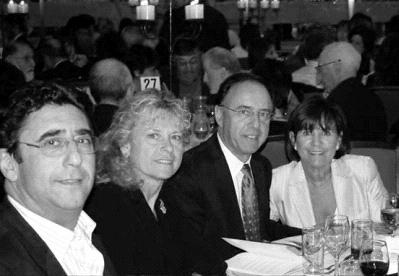
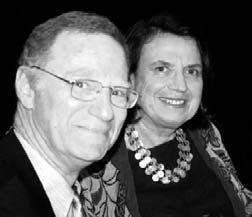


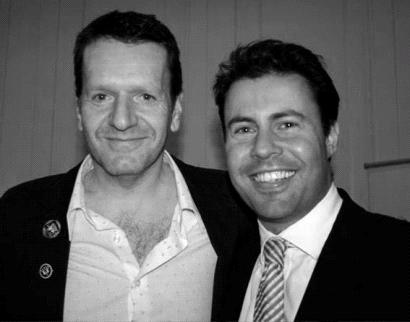
21
Terry Frenkiel, Josh Frydenberg. Ron and Judy Dodge.
George and Kathy Altmann.
Harvey and Eva Rotstein.
Victor and Judy Pack, Ian and Yvonne Davis.
Graeme Levy, John Rynderman, Meg Rynderman, Ron Dodge.
Joel Mahemoff, Monique Szer, Adam Trayer.
Helen and Bernard Carp, Pauline and Peter King.
Paul and Ricki Liberman.
Leigh Goldblum, David Smorgon and Morry Wrobel.
Quentin and Amanda Miller.
Deb Harris and Dr. Michael Polke.
Marvin and Lois Cohen, Robyn and Jamie Davis. Leonda by the Yarra.
Jack Sperling and daughter, Rosie Davis.
STUDENTS’ INSPIRATIONAL WORDS ABOUT CENTRE
atrocious periods that was borne from racial intolerance. By visiting the Centre not only can we bear witness to survivors of the Holocaust and what they have to say but we can also create understanding to foster and advocate for more tolerance throughout our country and the world. Xenophobia and other similar issues need to be addressed now not in the future or all could be too late. By visiting the Holocaust Centre not only can people educate themselves but also do humanity a favour and, at the same time, make a positive change to the world.
FAMILY PERISHED IN HOLOCAUST
They came from schools across Victoria in their thousands – including Catholic, Presbyterian, Anglican and Jewish. They were from large and small secondary and private schools and colleges, aged from 16 to 18. They joined the increasing number of individuals and family groups visiting the Centre, some returning for second and even third visits.
Many expressed their feelings that the Centre had a message for them in these uncertain times, a message out of the past for all people, all ages, all religions, beliefs and lifestyles. The Centre’s very presence, just walking through the entrance doors, stressed this need, indeed, the urgency of understanding each other. And, somehow, trying to live as one world – perhaps even one united small planet, with different lifestyles.
Perhaps all their feelings are summed up in a folio recently presented by Broadford Secondary College Year 12 student, Yvette Z. Ferguson. Yvette has visited the Centre many times and this year was one of three students who spoke at the Centre’s United Nations World International Holocaust Day (January 27) at Springvale Cemetery.
COUNTERING INTOLERANCE
She wrote: The Jewish Holocaust Museum and Research Centre is an important establishment that can counteract the problems such as racial intolerance and other similar problems present in today’s world. The form of this folio is in a report style article and is aimed towards an audience of teachers and mature age students. The purpose of this news report article is to inform people who may be unaware how serious a problem xenophobia is and by educating people it can be eradicated, making the world a more accepting place.
Education is one way and perhaps holds the key to eradicating this widely spread problem. People need to be educated in order to fix something that has long existed. But how? One possible way would be for teachers, parents, students – everyone to go and visit the Jewish Holocaust Museum and Research Centre in Melbourne.
The message portrayed by the Holocaust Centre and survivors must be kept alive so future generations can learn and remember the sacrifices and lives of those who died or survived one of human history’s most
Letters have also been received from Year 10 English students, from Wonthaggi Secondary College, following a Centre visit. They wrote:
To come to the Holocaust Museum was a good experience for me, I went in there knowing little about it, apart from my dad telling me his dad (my Opa, who is still alive) lost his whole family in the Holocaust, including his mum, dad, brothers, sisters, uncle, auntie, cousins, everyone. The things I found most interesting was the process in which they put the people through to get to the concentration camps. I would just like to thank you for giving me the opportunity to visit the Holocaust Museum, and I wouldn’t mind bringing my parents there one day. Ryan Lehmann. *****
I really would like to thank you for telling us what happened, it must be so hard telling the same painful story to schools, but I understand what you people are trying to do. Please don’t stop, because I will never want to see this happen in my life or even never again in human kind. So I really thank you for giving up your time to speak to me and the schools. Thanks heaps. Paul Hancock. *****
I came to the Museum with my school, Wonthaggi Secondary College. I thought it would be boring, but boy I was wrong. I have grown up with a racist person. I always hated Jewish people but after hearing what they went through I now understand the extent of the Holocaust and feel for all of the people who went through it.
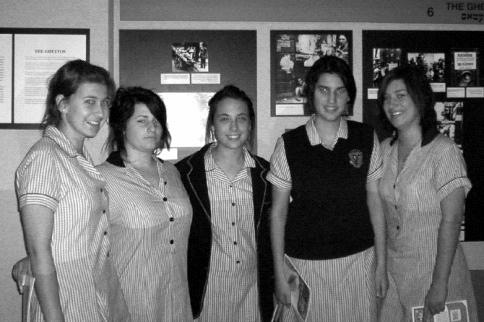 Rebecca Clarke
Rebecca Clarke
I think I am a better person for visiting the Centre and will have a clearer view on how I treat others. I think seeing the ghettos and concentration camps is a life changing experience. If I had a chance I would like to visit one of these and have a deeper look at these camps and explore the lives of people in these places.
We are currently reading the novel “Night” as a project in my class. I am interested what type of labour the men were made to do while imprisoned. Also, did at any time anyone think about breaking free or were you too young.
Reece Jones
22
*****
*****
High school students at the Centre.
Before we started learning about the Holocaust, I had no idea what it was. I had heard of Hitler and how he was an evil man but I had no idea what he did. When I did find out what he did I could not speak. I went home that night and had a huge discussion about it with my mum.
When we finally went to the museum and heard the stories, saw the pictures, I was quiet and I wanted to cry. The pictures I saw stay in my mind, and to think you guides saw it, experienced it. At first I didn’t understand why you told your stories, when one would think you would want to forget. But then one of our teachers said the reason why you do this is to let the world know what happened and must not happen ever again.
I will never forget what I have learned from this experience. You have made me understand how lucky we all are and how we must never give in to hatred. So we always have freedom.
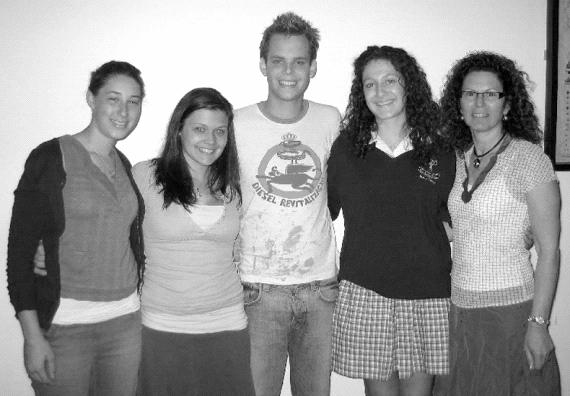 Emma Murphy
Emma Murphy
Sue Canders, Year 10 English teacher, explained that she also used the Centre’s website for students who were unable to visit the Centre. I had been very helpful in giving them a virtual experience by viewing
photographs and reading information about the Holocaust.
The website is a valuable source of information for all.
http://www.jhc.org.au
Two German exchange students visited the Centre with their Year 11 fellow students. They wrote:
While you were talking you made me think about what happened during this awful time, how the Jews were treated and what they were put through. Even though I know that all of that wasn’t my fault personally, I felt a little bit guilty for being German. I am grateful that most of the people are able to remember the awful time and pay their respects. Thank you for an interesting day.
Thank you for sharing your story with us. For me it would be really difficult to talk about this. I’m an exchange student from Germany and we deal a lot with the Holocaust in our German school. It was really interesting to see that other countries deal with the Holocaust too.
BOARD MEMBERS HEAR STUDENTS
Laura Rosenberg, Tessa Dowe, Laura Hayden, Joel Crosy and Sue Hampel, at the Holocaust Centre, gave arresting insights into their March of the Living trip, to a meeting of Centre Board members. Their short talks were applauded and many comments made about how their words and deeds augured well for the future of Australia, Jewry and the Holocaust Centre.
As one Board member said, "They are an inspiration and make me feel our community and nation will be in good hands. They make me feel proud."
Tessa Dowe hopes to attend the United Nations, New York, in January as one of many young people from Australia and other nations invited to visit the international organisation. Students at
ADDITION TO THE CENTRE’S LIBRARY
“The Deportation of Jews from Lodz Ghetto to KL Auschwitz and Their Extermination”, written by Auschwitz historian, Dr. Andrzej Strzelecki.
The original Polish version was published by the State Museum of Auschwitz Birkenau in 2004. Dr. Strzelecki sent a copy to Saba Feniger, the Centre’s past curator, whom he met personally on a number of occasions and whose parts of testimony are quoted in the book. The author promised to send a copy of the English version when published.
Waldemar Mazurek, the author’s cousin, from Melbourne, recently returned from Poland and presented a copy of the translated and personally dedicated book to Saba.
It is well researched and gives an accurate account of events and numerous testimonies of survivors. The book was published with the financial support of Yehuda Widawski, a Lodz survivor, living in Israel. Saba donated the book to the library because of its great historical value.
23
*****
*****
Board meeting.
MOVING STORY OF FRANCE UNDER THE YOKE OF NAZI GERMANY
BOOK REVIEW - Maria Lewitt
“SUITE FRANCAISE” by Irene Nemirovsky.

Published by Chatto & Windus, London 2006, translated by Sandra Smith.
The war didn¹t affect France till June 1940 when it capitulated. The retreating French army, with General de Gaulle, escaped to England, while the right wing Marshal Petain made a pact with Nazi Germany. As a result France was divided into the so called Occupied and Free zones.
CHANGED STATUS
"I swear here and now never again to take out my bitterness, no matter how justifiable, on a group of people, whatever their race, religion, convictions, prejudices, errors. I feel sorry for these poor children. But I cannot forgive certain individuals, those who rejected me, those who coldly abandoned us, those who are prepared to stab you in the back," Irene Némirovsky 1942.
Irene Némirovsky¹s paternal family came from the Ukrainian township Nemirov. It was known as a centre of progressive Hasidic movement. Irene¹s father Leon was born in the second half of the Nineteenth Centurya time of pogroms and anti-Semitism. His family traded in grains. They were well off. Leon travelled a lot in his youth, stopped in Kiev, a part of Yiddishland, where he married a beautiful girl, a daughter of a well off Kiev Jewish family.
By the time Irene was born, in 1903, he was a banker with world wide connections. Irene lived in luxury. She adored and respected her father but he was a busy man; her mother didn¹t love her; she was a very egotistical person, who considered that once Irene was born, her good looks started to fade. She hardly spoke to her daughter, instead leaving her in the hands of governesses. Irene would base mother-daughter characters in her writings, on her own experience. By the end of 1919 they reached Paris, where they lived comfortably until the beginning of the 2nd World War.
Irene always considered her Paris years as the happiest in her life. She was fluent in Russian, French, English, Polish, Finnish, Basque and Yiddish. She was an exceptionally intelligent student, both at school and university.
In 1926 she married Michael Epstein, also of RussianJewish background. By 1939 Irene was recognised as both a French and an international writer. She had nine novels to her name, many based on Jewish life in Russia. She was happily married, and a mother of two girls: a ten and a two year old. There was one thing the Némirovsky family couldn¹t achieve: it was French Citizenship. War was imminent, and in February 1939 Irene decided to convert to Catholicism together with her daughters.
Once Paris was occupied the Némirovsky¹s status changed. Irene¹s father¹s wealth was confiscated while Irene¹s royalties were stopped. As of the 4th of October, 1940, all French residents of Jewish descent without French Passports could have been interned from that day on. Irene was well aware of the law. She placed her daughters with a French family in the country in the Occupied Zone, where she thought they might be safer than with her. Being on the run, both parents would visit and stay with their daughters whenever possible.
Irene observed: “People get used to everything that happens in the Occupied Zone: massacres, persecutions, organised pillaging, are like arrows shot into mire... the mire of our hearts.”
What was incredible was that being aware of the prospects awaiting her and her family, Irene didn¹t stop writing. She planned her work well ahead. In her large notebook we find the wealth of her thoughts and endeavors. She had used it not only as her diary, but also as a place to create and develop her characters. The depth of her observations, the feeling for her countrymen, for the suffering of the arrested, for the fate awaiting the Jews, even some premonitions regarding herself. She was a harsh critic of her work. When the war started she was planning a new project: a five volume contemporary novel.
She saw it as her own “War and Peace”. The first book “Storm in June” starts in Paris, in June 1940, when in normal conditions Parisians were planning their summer holidays. This year was different. The German invasion was imminent. Book one concentrates on the evacuation in mid-June, July. She describes the events through the eyes of several families. For her they were all people, their thoughts and feelings, reactions were the most important. She set them against the background of political events, but didn¹t play politics.
TRUTH
What is so appealing in Némirovsky¹s writing is her uncompromising truthfulness. Whether she speaks of aristocrats, intellectuals, patriots, ordinary people passing by, they all emerge from the pages as true people with normal human reactions and emotions, regardless whether they were French, Germans or foreigners, whether religious, agnostics or atheists. They react according to their backgrounds and morality. When a German soldier was asked ...¹what d¹you think?¹
24
His answer was: “Madame, I am a soldier. Soldiers don¹t think. I am told to go somewhere, I go. Told to fight. I fight...”
FEAR AND HOPE
Book two “Dolce” covers the period of lull. Little by little people find accommodation and realise that they have to start accepting the situation and plan for the future. Women, whose husbands were taken prisoners of war, wondered how to survive the period, how to feed their children. Some established relationships with German soldiers to make their life easier. Patriots, especially those who were well off, were full of contempt. People gossiped, loved, hated, quarrelled, make plans, dreamt, deserted their country. The war went on, but human nature didn¹t change. We are never far from nature: descriptions of the surrounding forests and fields are always in the background. Fear and hope walk hand in hand.
After Irene¹s arrest Michael tried to save her. Once he realised they were trapped in the Nazi web he begged his friends to look after the girls. He was arrested and sent to Auschwitz a few weeks after Irene. Then the Nazis wanted to arrest their daughters. Both girls were hidden in cellars, then in a convent.
It is thanks to Irene's daughter that Irene Némirovsky¹s manuscripts, her correspondence and her notebook have survived. Denise Epstein had kept it after her mother¹s arrest. Both sisters were still young
when the war ended. They learnt that both their parents had been killed. The only member of the family who survived was Irene¹s mother. She lacked nothing during the occupation and repossessed Némirovsky¹s family home in Paris as soon as the war was over.
Once the war was over a friend took the girls to their grandmother: she spoke to them at the door and declared that since their parents were stupid enough to be killed, the right place for their children would be an orphanage.
Fortunately Irene and Michael had good friends who took the disoriented and morally wounded children under their care. It took both sisters many years before they felt strong enough to open their mother¹s documents. It took 64 years after their mother¹s tragic death, in Auschwitz in 1942, before “Suite Francaise” was submitted and then published to the acclaim of the literary world..
Irene managed to write only two volumes of her intended epic novel. “Suite Francaise” has been acclaimed as “a book that is beautifully complete in itself”. One can¹t but wonder where the next three volumes would have taken us. “Suite Francaise” is a book to remember, written by a great writer. Irene Némirovsky paints word pictures. She holds up a mirror to a certain time and people. Her prose is beautiful. It is an honest account of human behaviour during the war. I strongly recommend it to all who love literature.
BABI YAR MONUMENT AT SPRINGVALE
The Holocaust Centre participated in the unveiling, in October, at Springvale cemetery, of a monument to the memory of the estimated 100,000 Jews who were shot and buried in the Ukraine, in Babi Yar.
Sculpted by renowned sculptor Andrew Rogers, the monument symbolises the abyss that Babi Yar has come to represent in Jewish history.
The mass killings began in September 1941, when more than 30,000 Jews were methodically slain and buried.
Melbourne Holocaust survivor Zalman Zehnwirth's ambition to erect an Australian Babi Yar memorial finally came to fruition. It is in memory of the death of his father, mother and sisters, among scores of members of his own family, slain by the Germans. Babi Yar has been described as part of Jewish history which hasn't received its rightful place in world history.
Soviet poet Yevgeny Yevtushenko wrote his
acclaimed “Babi Yar”, which led to the erection of a memorial in the Kiev ravine.
SPIELBERG DOCUMENTARY
Hollywood producer and Holocaust Centre patron Steven Spielberg has made a documentary about the Nazi massacre at Babi Yar. Titled “Spell Your Name”, it is by Ukranian director Serhiy Bukovsky, for which Steven Spielberg worked as executive producer. It contains Jewish survivor testimonies and of those who rescued neighbours and friends during the Holocaust.
Steven Spielberg said that he believed listening to the stories of Holocaust survivors from all around the world was going to change the world and already has in many ways.
The film was produced by USC Shoah Foundation Institute, a Los Angeles-based organisation founded by Steven Spielberg.
INTERESTED IN BECO MING A VOLUNTEER?
For 22 years, our volunteers have been the lifeblood of our museum.
If you have the time, interest and commitment to become a volunteer and want to know more, contact: Linda Faigen on 9528 1985 or email: lindaf@holocaustcentreaustralia.org.au
25
WHO ARE THE KATZETLERS?
Centre News is often asked about the Katzetler Farbund organization – one of the Centre’s incorporated Board members. What exactly is it? What are its aims? How was it formed?
In the following article Henry Erlich, who was vice president, of the Katzetlers Farbund for many years, and who is writing a book on the organisation, answers some of these questions.
Henry Erlich writes:
The Katzetler Farbund was formed of Holocaust survivors. They came mainly from Poland, settled in Melbourne, and formed a community. My father, Sam Erlich was the president of the Katzetler from it’s inception in 1955 until his death in 1994. I grew up among people where grandparents and extended families hardly existed. I was asked to join the committee of the Katzetler after my father’s death, even though I was not a survivor, and was elected vice president.
The Katzetlers functioned as a extended family. “Katzet” is German for concentration camp and “Katzetler” translates to concentration camp inmate. The use of the words “Ex-Victims” is incorrect because they were still and remained victims. “Farbund” means organization. The name expanded as other participants such as partisans joined the organization.
When I started to write a history of the Katzetler organization in 2006 certain issues arose.
Who am I writing for? Is my main target the survivors? My father told me that what happened was much worse than anything that I could read about or imagine. Another told me that whatever was described was true; the Poles were the worst; but many survivors say they owe their life to a Pole. Are the statements contradictory? How could I tell people who had lived the experience and thought about it all their lives anything. So when writing I must assume that I am writing for people other than survivors. Translated, it means that when I write about where the Katzetler came from I will describe the Ashkenazi history, some of the events of the Holocaust, the Stalinist time and the immigration experience.
Around the framework of the Katzetler I try to build the story. I summarise some of the conventional wisdom and illustrate it with a story or an opinion and then add the views of survivors to create a patchwork around what has been said.
Chaim Sztajer said “I met Sam Erlich soon after I
came to Melbourne in 1955. He had heard that I was a survivor from Treblinka. Sam would not let me go. With a few others we started the Katzetler organization, an association of those who survived the concentration camps. The association soon included members who had been Partisans or in other ways evaded the slaughter. We worked day and night. We helped those that needed help, organized a memorial”.
AMAZING SPIRIT
I was always amazed that these people laughed and sang, that they had a vibrant and happy social life with many parties and a constant stream of community activities. The past was hardly ever mentioned, at least not to their children. The past was however always present, all pervasive, and not far from the surface.
Shoshana Loven explained, "The Katzetler was like a big family there was so much harmony. We had all lost so much. We were always at each others’ houses. If the door was open people entered. Rabbi Gutnick inspired us. He officiated at our simchas (celebrations). We needed the warmth from our people and we laughed and moved on with life but we cried alone.”
Charles German, a child survivor, succeeded Sam Erlich as president of The Katzetler, and soon after I, not even a survivor, became vice president. Many survivors complained to me that things were not the same. Of course, things had changed. Charles and I were from a different generation and could not be part of the social cement that was the core of the Katzetler. We did not share the same life experiences. Now the focus shifted from being a community, a family, to educating others about the Holocaust.
The Katzetler organization, like life, had by definition a limited duration. If education was the function then the Holocaust Museum in Elstenwick, represented the future. Many survivors became volunteers there. Their presence added a dimension that time will also erode. Nothing is as powerful as personal testimony from a survivor. I took a non-Jewish friend to visit the museum. He became fixated on the infamous experiments on twins by Dr. Mengele. His attitude had been a very quiet belief that the Jews made too much of the Holocaust. When one of the guides informed him that she had been one of the doctor’s victims I saw his attitude change as he was listening.
But, I now wonder. What is the future of the Katzetler movement?
26
JOIN THE FRIENDS AND SUPPORT THE DIVERSE PROGRAM OF EVENTS FOR 2006 SINGLE $ 25.00 FAMILY $ 45.00 SINGLE CONCESSION $15.00 CONTACT ELLY EMAIL: friends@jhc.org.au
ENTRIES FOR THE MEYER BURSTON SCHOLARSHIP 2007
Applications are now available for the annual Meyer Burston Scholarship 2007, donated by the Friends of the Holocaust Centre.
The scholarship is an excellent opportunity to pursue an interest in Holocaust studies as well as volunteering some of their time back to the Museum.
The Meyer Burston Scholarship was established in 2003 by the Friends of the Jewish Holocaust Museum Inc. with the purpose of furthering Holocaust education.
Meyer was for many years, up until the time of his death, the Centre’s honorary director.
The Scholarship in three categories
The applicant must be able to demonstrate their support and commitment to the Jewish Holocaust Museum and Research Centre plus at least one other of the categories listed:
To support an educational program by a teacher, tertiary or post graduate candidate to study the Holocaust in view of promoting, developing and improving knowledge and understanding of the Holocaust.
To research an aspect of the Holocaust the candidate could attend Holocaust museums, conferences or seminars locally, nationally or internationally. They must be able to demonstrate its relevance to the Jewish Holocaust Museum and Research Centre.
FRIENDS’ RAFFLE WINNERS
To support participation in the March of the Living study tour of Poland and Israel.
The awards will be valued at a maximum of $5000 per applicant which may be offered either fully or partially, at the discretion of the Trustees.
An applicant will not be eligible for a scholarship if he/she has already been awarded a similar scholarship. Paid Employees of the Jewish Holocaust Centre Inc. must have prior Executive written approval.
Applicants are required to fill out the application form and submit a curriculum vitae outlining their academic record and other relevant personal details and the names of three referees. They must detail their plans for the use of the scholarship and the ways in which it will benefit the Holocaust Centre.
For more information:
Phone: Elly Brooks on (03) 9596 9737 or Silvana Layton on (03) 9886 0300
Or email: friends@jhc.org.au Attention: Trustees of the Meyer Burston Scholarship
Closing Date: Monday January 22, 2007. Submissions are to be addressed to: The Trustees of the Meyer Burston Scholarship, Friends of the Jewish Holocaust Museum Inc., 13-15 Selwyn Street, Elsternwick VIC 3185.
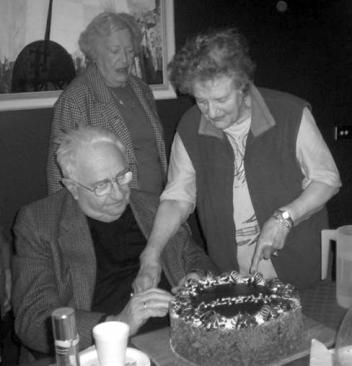
Drawn on 10 October 2006: 1. P. Mrocki (Federal Hotels and Resorts, ETM Group); 2. Elfie Rosenberg (Jewish News); 3. Eva Boulton (Palace Enterprises); 4. Lee Rosenberg (Teapot by Kim Richwol); 5. Kay Kaufman (Maccabi Table tennis lessons); 6. M. Rosenbaum (French Cognac by John Lamovie); 7. F. Goodman (Hair Body and Soul); 8. D. Pryles (Stationery pack by Lyla Burston); 9. H. Rosenbaum (Dewi Duggan); and 10. H. Sokolski (Sunflower Book Shop).
CONGRATULATIONS
Volunteers held a congratulatory luncheon at the Holocaust Centre in November, for co-president Shmuel Rosenkranz and volunteer Marsha Weiner on receiving their JCCV awards, from the Governor of Victoria, Professor David de Kretser AC, at Monash University (See story page 3). There were cheers all round as Marsha and Shmuel cut the delicious cake.
MINISTER’S COMMENTS
John Pandazopoulos, the Minister Assisting the Victorian Premier on Multicultural Affairs, included the following comments in a letter to the Centre News editor: Over the past two decades, Victoria’s Jewish Holocaust Museum and Research Centre has served a crucial role in honouring the memory of those lost, reflecting the immorality of genocide and promoting the cause of acceptance and inclusiveness among all peoples. He added he looked forward to hearing of the Centre’s progress in the future.
27
HOLOCAUST CENTRE & UJEB BATMITZVAH VISITS
the Robert Blackwood Hall at Monash University.
This year at Henri Korn’s recommendation, the girls were asked to read the “Diary of Anne Frank”. Anne was of a similar age to the girls during the war and somebody that the girls could relate to and her book was appropriate to read. Anne eloquently describes her life, troubles, and tribulations and it was thought that even if the girls only read a few entries of her diary, they would still be able to get some idea of life during that time.
The United Jewish Education Board gives Batmitzvah girls a thorough overview of the Holocaust including a Centre visit. This program eventuated following co-operation of Centre survivor guide Henri Korn and Denna Kaltman, UJEB Batmitzvah teacher.
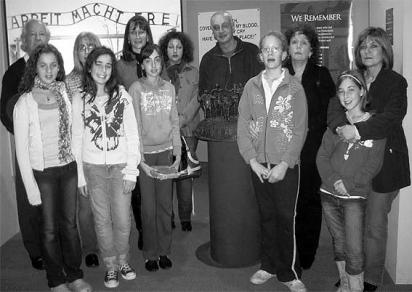
Deena explained to Centre News that over the past two years the UJEB Batmitzvah program had incorporated a more comprehensive Holocaust unit in its curriculum.
Commenting on a recent visit, Deena said Henri spoke sensitively to the children before they went into the museum. “This year especially, I felt the girls who had had quite a lot of exposure to the Holocaust, were prepared for the tour. They were shown the Children’s Room. If they wanted to see the rest of the museum with their parents that was their choice. The girls are 11 and 12 years of age. We had previously taken the girls through the main museum. The girls came away moved and informed from the excursion and hence the objectives of the unit were fulfilled,” she added.
Early in the year the girls together with their parents went to the Yom Hashoah commemoration evening in
Deena said she taught two Batmitzvah classes and chose early July for the girls to finish reading the diary and to hold a class about life during the Holocaust and what it meant to the Jewish people. Closer to this date, she contacted the Holocaust Centre and arranged for some female child survivors to come and speak to the girls. “Personally, I am so grateful for the Holocaust Museum for helping me out with two wonderful women, Mrs. Maria Lewitt and Mrs. Lusia Haberfeld, who gave inspiring talks to the girls and their parents about their lives during this time,” she said.
One of the aims of the Batmitzvah year was to provide female Jewish role models for the girls right across the age spectrum.
The final section of the Holocaust unit was the girls’ excursion to the Holocaust Museum itself. This year was their third year with Henri Korn, the guide.
Henri Korn said that it was very comforting to see another group of youngsters making a commitment to their Jewish background.
“You, young ladies might well ask why you have to be taught about the Holocaust. The Jewish experience has many facets. If you formally join the Jewish people, you have to be made aware that many children suffered. I, for instance, had no opportunity to have a batmitzvah, but at the age of 73, in conjunction with my eldest grandson, I was barmitzvahed and took the same step you will be taking shortly.
As Jews, we are encouraged to ask questions,” he explained.
K. CAMP PETERSWALDAU, JANUARY 1944
Ruth Crane
Look Rutka look, the German guards, to their quarters, to their quarters just went away.
So for a while in camp together we still stay.
So sing Rutka sing.
Let’s hope a sweet soundling tone will soften the heart, that feels like a stone.
And maybe for a little while, it will give us back our smile. And perhaps tomorrow, there will be less sorrow, and we’ll stay another day alive.
Tomorrow and tomorrow and tomorrow.
Today, further enhancing and compelling the source of our pride, hope and inspiration, is our second, third and fourth generation.
With many more to come G-d willing.
Yet for Peace and Tranquility in the world we still hope and pray.
So we can be together year by year.
Day by day by day.
And faith will always stay in my heart. With a tender hold and gentle start.
28
UJEB Batmitzvah group at the Centre from South Caulfield and Brighton Shules.
AMBASSADOR HONOURS RIGHTEOUS AMONG THE NATIONS
His Excellency Naftali Tamir, Ambassador in Australia, on behalf of Yad Vashem, recently presented a medal and certificate to the daughter of a Righteous Among the Nations, at the Holocaust Centre.
Mr. Tamir made the presentation to Marja Esther Berclouw, daughter of Mrs. Cornelia Berclouw-Moes, who saved Jews during WWII.
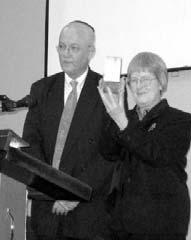
THE RIGHTEOUS
Who are “The Righteous Among the Nations” honoured by Yad Vashem and at the Holocaust Centre and featured in a recent “Courage To Care” exhibition at the Centre?
They are the “Righteous”, those non-Jews who risked their own lives to save Jews from the threat of death and deportation to the death camps.
Righteous Among the Nations per country and ethnic origin are believed to number about: Poland 5,800, Netherlands 4,586, France 2,366, Ukraine 1,984, Belgium 1,381, Hungary 643, Belarus 527, Lithuania 513, Slovakia 439, Germany 383, Italy 341, Greece 262, Yugoslavia (Serbia) 118, Czech Republic 111, Russia 110, Croatia 98, Latvia 94, Austria 84, Albania 61, Moldova 59, Romania 48, Switzerland 38, Bosnia 34, Norway 24, Denmark* 19, Bulgaria 16, Great Britain 13, Sweden 10, Macedonia 10, Armenia 10, Slovenia 6, Spain 3, Estonia 3, China 2, Brazil 2, Japan 1, Luxembourg 1, Portugal 1, Turkey 1, USA 1. The Danish Underground requested that all its members who participated in the rescue of the Jewish community not be listed individually, but as one group.
Those who saved the lives of Jews came from all over Europe as well as from other parts of the world. However, these figures do not reflect the actual number of Jews saved by non-Jews in each particular country.
Many who saved lives have not been identified, because of lack of evidence or loss of contact after the war.
In some other cases, communities rather than individuals were recognized and these figures are not included in the table: they include the whole Danish people and members of the Norwegian underground. How did they help?
Those non-Jews recognized as Righteous helped those escaping by offering: shelter, places to hide, food, means of escape
All these actions were taken at great risk to their own lives and those of their families.
Usually they acted alone, in some cases with others. On rare occasions this involved the whole community, as it did in Denmark and in the French village of Le Chambon-sur-Lignon where the people hid Jews in their homes, in some cases for as long as four years.
A number of the rescuers and rescued made their homes in Australia after the war. They were featured in a Centre exhibition.
ARTHUR CALWELL AND JEWISH REFUGEES
Mary Elizabeth Calwell, Immigration Minister Arthur Calwell’s daughter, who visited the Centre recently.
From his youth, Arthur Calwell read widely and deeply and attended and demonstrations against oppressive regimes. He held most senior ALP positions by his early 30s and in a broadcast in 1935 entitled ‘Why Labor hates fascism’, he condemned fascism as anti-democratic, anti-social and anti-religious. The Australian Labor Movement, nurtured freedom and fostered by those who lave liberty and truth, opposes with a holy hate…this pestiferous growth that threatens even civilisation itself with its perversions and enormities.
Geoffrey Sawer recalled Calwell in 1935 as one of Victoria’s top public servants employed as a sort of roving trouble shooter, a ‘job that called for a quick and flexible mind and a vigorous decision making temperament’.
He was elected the third Federal Member for Melbourne in 1940, Calwell declared he represented the most nationally diverse electorate in Australia. In 1942,
Calwell was appointed Chairman of the new Aliens Classification and Review Committee, that investigated the internment of ‘enemy aliens’. Most detainees, including the ‘Dunera boys’, were released. Among people who gave evidence were Alec Masel, Frances Barkman, Rabbi Dr Sanger, Paul Morawetz and Julian Layton. Calwell created a category of ‘refugee alien’ to assist anti-Nazi refugees.
He became Minister for Information in 1943 and the first Federal Minister for Immigration in July 1945. Within a couple of weeks, Alec Masel and Paul Morawetz visited him, pleading for help for survivors. On 24 August, the Jewish News declared that the Minister had announced that close family relatives of Australian residents could be nominated to come to Australia. Calwell suggested the Jewish Council prepare similar but not identical forms to be sent to Jews overseas and allowed their typists to use his office. Calwell stated that Prime Minister Chifley ’had his complete confidence’ as he had my complete loyalty.’ He recalled: ‘I automatically approved of each list because I trusted my Jewish friends and they trusted me’. The Executive Council of Australian Jewry
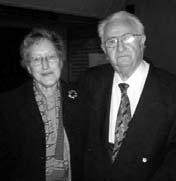
29
Naftali Tami, Israeli Ambassador and Maria Esther Berclouw.
Mary Elizabeth Calwell and Shmuel Rosenkranz.
negotiated Landing Permits and Calwell directed that ‘applications for persons of Jewish origin must be referred to the Jewish Welfare Society.’ Shipping was obtained through American-Jewish organizations, JOINT and HIAS and the Government required that half the accommodation on ‘these wretched vessels’ be sold to non-Jewish people as Calwell observed: ‘It would have created a great wave of anti-Semitism’ at a time of a major shipping shortage. Over half the Landing Permits between November 1945 and November 1946 were issued to Jewish refugees.
ANTI-SEMITISM DANGER
Calwell received sustained hostility from some political opponents and the media, but Opposition Leader R. G. Menzies, while more conciliatory, warned of the danger of anti-Semitism and racial prejudice should too great a proportion of Jewish refugees be included. Calwell also justified Jewish immigration by observing the the commitment of the UAP (Liberal) Government in 1938 to admit 15,000 refugees under the Evian Agreement was only partially implemented and also Jews fought for Australia during the War. A decision to restrict the number of Jewish passengers to 25 per cent took effect in February 1947 after consultation with the Jewish Community. In 1948, the Jewish Welfare Society was permitted to give maintenance guarantees and sponsorship. The migration of British Jews continued. Some Jewish people came subsequently as nationals of their countries of birth.
MY YEARS AS A GUIDE
Kitia Altman
My 20-odd years as a guide in the Holocaust Centre are full of memories of students, teachers and many other visitors.
Their responses to our experiences are the precious rewards for our, often painful, testimonies. I am assailed with doubts if I’ll reach at least one of them. And when I do, I have a feeling of a special accomplishment. It is always the one, who hangs back, eyeing me shyly, who will say “thank you” or who will emotionally comment on what I have said. Girls usually approach in pairs, but the tall, lanky boy, as if embarrassed by what he wants to say, waits till I am alone before he dares to speak.
These brief personal encounters are most important to me. For a long time I had to overcome not only my doubts, but also a lack of confidence, and quite a severe self-criticism before and after each Monday – my day of duty. In the first few months of my guiding it became clear to me what an enormous moral burden it was to share horrific experiences of human sufferings and of evil with young unaware students.
I recall a girl, bitterly sobbing, coming up to me and telling me she was German.
“What can I do to make up for your sufferings?” she asked.
Elke never lost contact with me. She brought her parents to the Centre to view our first testimonies, recorded by the students of La Trobe University. Elke wanted to study, to learn about people. No one in her family ever had a tertiary education. She is now a social
The Sydney community argued that the quota be adhered to but the Melbourne Community ‘displayed more persistence and flexibility’ and Calwell joked that he had never met a person with so many cousins as Leo Fink. A small number of Jews came as Displaced Persons and Egon Kunz concluded that: the reason being that Jews on the whole avoided the Mass Scheme with its contract obligations, relying instead on assistance given by Jewish organisations…
Claims that Post-War policies demonstrated antiSemitism have been rejected by informed authorities. These views have been rejected by W. Rubinstein, Ann Andgel and Colin Golvan. Morawetz commented that the 25 per cent decision was …a reasonable proportion…I always felt Calwell was doing his best that was possible looking at it from an Australian point of view…
Sidney Einfeld in Sydney stated: “most countries in the world were not accepting Jews anyhow…We were anxious to build up the community and were successful to the extent that more than one out of every two Jews in Australia these days are either people who came at that time or descendents of them.”
In 1946, one hundred trees were planted in Israel in Calwell’s honour through the Melbourne Jewish Community, in 1960, it gave a dinner to honour Calwell’s election as Federal ALP Leader and in 1998, the Arthur A. Calwell Forest of Life was dedicated at Kessalon near Jerusalem.
worker, married with one child. Nowadays we communicate once a year, at Christmas.
Since my first experiences of an emotional reaction from a young student, I became acutely aware of a guide’s responsibility towards his or her listener. It is as if their whole outlook, future attitudes and relationships to people, were in your hands.
I remember the 10-year-old granddaughter of the late Rabbi Chaim Gutnick. She asked me if she could see my tattoo again. I pulled up my sleeve. She looked at it and asked if she could touch it. Then, with her little finger she slowly and carefully traced each digit on my arm.
“And now,” she said, “I would like to listen to your heart”.
That little girl taught me that talking about feelings was as important as talking about what happened to us during the Holocaust.
There has been a long list of remarkable responses from young and old, who enter the Centre, visit the Museum and hopefully leave it wanting to do better for our world.
Another incident comes to mind. The year 12 exchange student from Germany. He addressed me in an elegant, cultured English. He had come to the Centre with some misgivings and fears, prepared for outburst of hatred and calls for vengeance.
I remember, I talked about the post WWI political and economic chaos, that made the ground fertile for
30
the rise of Nazism. He thanked me for recalling my experiences and said it was hard for him to understand how I could be free from hatred.
“In this place,” I said to him, “we fight racism and intolerance and do not spread destructive hatred. We seek justice and not revenge”.
Not all students react in a way that mirrors the positive achievements of our educational aims. Occasionally, a comment in the visitors’ book reveals anger and/or ignorance by the young visitor.
“Hitler didn’t finish his work” and such like.
One encounter with a student left me very disturbed. It was a girl, surrounded (obviously) by her supportive friends, who stopped in the Centre and told me in an aggressive voice, what I said and what she sees here “is all lies”.
“What makes you think so?” I asked.
“My grandfather told me the truth about the war”.
“Where were you born?” I asked.
“In Argentina” she replied.
What a chance do facts have against strong family bonds, love for a grandfather and an absolute trust in his credibility?
Students are not the only visitors we have. Church groups, including ones where most of the men were soldiers, who had fought in the Pacific, been Japanese P.O.W.s with a strong identification with our experiences.
One grey-haired lady seeing my tattoo, said: “And they were Christians”. Or the couple who came from Mt. Eliza, on a Sunday morning, and waited for one hour for the Museum to open. Their 15-year-old grandson asked them to come, after visiting with his school. Later, in a letter to me she wrote: “…you reinforced our desire for all the Jewish people, living or dead to be remembered forever. We hope, Daniel will remember too and pass it on to his children”. These words express our innermost wish, that a visit to the Museum
LIFE GOES ON
Tova Tauber
Just a life and death incident during my incarceration in Auschwitz.
Part of my autobiography. Cannot bring myself to write it down.
Always delaying, delaying. For how long? Should I start from the beginning? Which beginning? 1939 or 1944?
The beginning of the end? End of the terrible war and an end to so many more innocent lives including most of my immediate family. Birkenau!
‘Yes my dear,’ she turned looking at me. ‘It is best if you go to hospital now.’ I shuddered! ‘Oh no! Not that place!
For I knew well that I had no hope of coming out alive. Very few people did. ‘Don’t be afraid, you are young and surely you will recover.’
…Given a chance before the angel of death came in the shape of the infamous doctor in white. But my fear was undiminished.
‘You know very well what happens to people once they go in?’
I turned to her… pleading for some miracle.
will be remembered as a tribute to all victims of the Holocaust and of intolerance”.
There is, no doubt, the sight of an Auschwitz number tattoo on the arm of a guide, creates a feeling of shock and fear and, at times, even revulsion.
I am asked, as are other guides: “How do you cope with your daily life now?”
As the survivors reach the age that has been denied their parents, maybe the way we lived our life deserves to be recorded. Alongside childhood, described in biographies, the young years lived plunged into unspeakable horror of inhumanity so well documented in testimonies, films, books and other forms of art. We entered old age unlike any other generation before us. Without role models, without seeing your parents aging and without knowing what did they expect from us –their children, in their hour of need. We never had the privilege of caring for them and of learning how to respect their diminishing independence.
I thought to myself addressing a group of women was not so difficult to build bridges if each side starts at an opposite end and meets in the middle with mutual respect.
The highlight of my “guiding experience” was the visit to our Centre of Bishop Christopher Prowse. I was excited by the task entrusted to me, of showing the Bishop around the Museum, as the Bishop and his secretary requested a private tour. We spent some “quality time” discussing the importance and uniqueness of the concept of The Righteous Among the Nations of the World, those gentiles who had saved Jews.
The visit of Bishop Prowse and his consequent letter (published in the Centre News) made me think once again, of the long road the Holocaust Centre has travelled, the many people it has touched, the many achievements it has reached and of the enormous contribution the guides have made towards it.
‘You cannot go on any longer like this,’ the woman doctor, a prisoner like the rest of us, said to me.
‘Should they discover you here with your fever they will surely take you away to the place without hope, mercy or return.’
Oh to be alive on a sunny morning, enjoying good health! And yes, to be able to partake of life abundant! Feeling hungry and being able to still the want and pain at will.
Yes. Hunger pains all during the unspeakable war years.
Hunger pains, constant, nagging, all consuming.
Life renewing itself all the time.
Gone is the awful nightmare, but its memory is not, and never will be erased.
The house is suddenly silenced. Everybody gone out. Thoughts flooding my mind. Straining, to the distant past, trying to recall events. Pull the safety curtain across to still the agony and regain sanity an inner voice urges.
Yes!
Life goes on.
31
ACQUISITIONS: June - September 2006
Ursula Flicker
The following are the latest additions to our collection:
1. Photograph taken in 1987 of monument to martyrs of Skarzysko-Kamienna and another photograph taken in 1989 of monument to Jews of Katowice, Poland, the birth place of donor. 186 members of his family perished in Holocaust.
Donor: Mr. Siegmund Siegreich
2. Documents and photographs detailing life of the donor and her late husband from their birth in Oswiecim, their survival during the Second World War in Germany, Belgium, and France, and their settling to a new life in Australia.
Donor: Mrs. Peppy Binenstock
3. Photographs taken whilst on a visit to Hungary of Dohany Synagogue and of monument of shoes of those shot into the Danube.
Donor: Ms. Suzane Fabian
4. DVD with map of visit to Gdansk in Poland in 1999. Located grave of Jewish woman shot on a death march. She was buried by donor’s father and burgemeister.
Donor: Mr. George Prillwitz
5. Photographs of visit to Poland, Auschwitz-Block 27 where he recited Kadish; Biography; Copy of his admission form to Auschwitz.
Donor: Mr. Ezriel Rabinowicz
6. Coin issued in 1943, 10 Mark from Litzmannstadt Ghetto and book titled “The Brothers Ashkenazi”.
Donor: Mr. W. Thomason
7. Medals/Pins of Polish Union of former political prisoners of war issued in Lodz Poland.
Donor: Mr. H Bornsztejn
8. Photograph taken in Ukraine, “The last Jew being shot” Vinica-Vinnitsa Ukraine.
Donor: Mr. Robert Strover
9. 2 Coins (5 and 10 Marks) from Lodz Ghetto.
Donor: Ms. Reene Zufi
10. For our “Cherished Children” Project photograph of sister of donor, Julia, who perished in Auschwitz after being deported from Gyor in Hungary in 1944. Also a copy of map from Poland 16th century City of Krakow, then the capital of the kingdom of Poland.
Donor: Mr. Stephen Schmideg
11. Edition of Dutch language newspaper “Kijk”; Magazine Check Point Nos. 2 and 3, March 2001 and April/May 2001.
Donor: Mr. Martin Verschuur
12. Booklet: “Concentration Camp Dachau”. Album produced by the International information office for the former inmates of Concentration Camp Dachau.
Donor: Mrs. Shirley Levy
13. Framed photograph taken by professional photographer Waldemar Seybold of Holocaust Memorial in Budapest, Hungary.
Donor: Dr. John J Gyorki
14. Deutsch Reich stamps and coins.
Donor: Ms. Tiffany Rynderman
The Centre’s Archives asks more donors to bring their treasured documents, objects and artefacts to it for safekeeping. All items about the Holocaust are important to remember the past.
32
PERSONAL ANNOUNCEMENTS
Birthdays
Fran Goodman, Susie Briner, Sue Lewis, George Brajtberg, Itka Markman, Miriam Tisher, Som Sokolski, Piry Weiss, Les Erdy, Stan Fox.
Wedding Anniversaries
Mr. & Mrs. Schweitzer 60th
Mr. & Mrs. Greenberg 68th
Mr. & Mrs. Debra & Richard Immergluck 60th
Wedding
Sally & Jonathan Robin
Barmitzvah/Batmitzvah
Elli K. Kras
Natalie Sher
Condolences
Mr. & Mrs. S. Rockman
Mr. & Mrs. A. Kolski
In memory of Jack Zucker
In memory of Moshe Szyja & Marsha Cykiert, Adela, Bluma, Baila and Miriam from Tova Tauber.
Speedy Recovery
Danka Schnall
Mike Gilligich
SONIA WAJCMAN’S DONATION
Long time volunteer and one of the early Centre visionaries, Sonia Wajcman, has made a substantial donation to the Centre.
Polish-born Sonia came to Australia in 1949, worked tirelessly in the Jewish and wider community to ensure the events of the Holocaust are not forgotten. In particular with Mina Fink, she began the Guides Group at the Centre, being its first secretary and served as their representative on the Centre’s Executive.

Sonia says her hope for the future is that the younger generation will continue the Centre’s work so lovingly begun by her group of volunteers.
BARMITZVAH ANNIVERSARY
Centre Volunteers send a Mazel Tov to longtime substantial donor Leon Jedwab on the occasion of the anniversary of his Barmitzvah. We wish him and his family many years of health and happiness.

JEWISH HOLOCAUST CENTRE HOLIDAY OPENING HOURS
Sunday 24th December
12.00pm—3.00pm
Monday 25th December CLOSED
Tuesday 26th December CLOSED
Sunday 31st December 12.00pm—3.00pm
Printedby:EllikonFinePrinters,Fitzroy,Victoria.Australia
33
Thanks to Eva Marks for her assistance with this issue of Centre News.
MAKE A PLEDGE MAKE A PLEDGE
HAVE YOU CONSIDERED DONATING TO THE HOLOCAUST CENTRE?
PLEASE HELP US MAINTAIN THE CENTRE AND KEEP ALIVE THE HOLOCAUST’S MESSAGE AND THE MEMORY OF ITS VICTIMS.

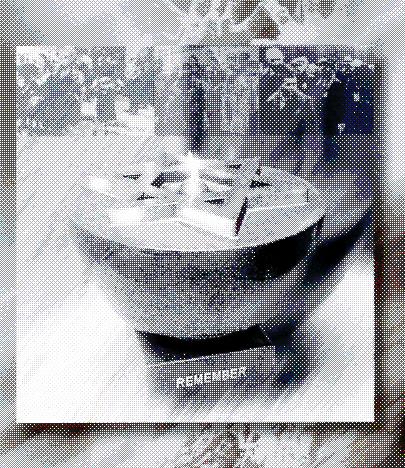
WE MUST KEEP THIS LEGACY ALIVE FOR THE FUTURE WE MUST KEEP THIS LEGACY ALIVE FOR THE FUTURE
I pledge the amount of $
Name
Address
Credit Card Bankcard Visa Mastercard Amex
Number
Expiry Date /
Please make cheques/credit card payments payable to: JEWISH HOLOCAUST CENTRE INC.
Credit Card Payments can be made by: Phone: 9528 1985 Fax: 9528 3758 OR Email: admin@jhc.org.au
ALL DONATIONS ARE TAX DEDUCTIBLE
15 Selwyn Street, Elsternwick VIC 3185
34
We are pleased to support the JEWISH HOLOCAUST CENTRE INC. and the publication of CENTRE NEWS
As a result of our achievements and fundraising efforts this last year we have been able to allocate:
$10,000 to sponsor the publication of a book “LESS and MORE” of our Museum’s Photographic Exhibitions by Saba Feniger our first Curator.
$20,000 towards funding a Development Manager for the Museum.
$5,000 TO THE 2006 MEYER BURSTON SCHOLARSHIP awarded to: Natalie Krasnostein whose project involved 3rd Generation participants’ workshop, progressing to a play to be performed next year. She has also presented a synopsis of the workshop at Limmud Oz and Yad Vashem/
$5,000 has been allocated to Jayne Josem our current Curator for an Overseas Study Tour of Holocaust Museums.
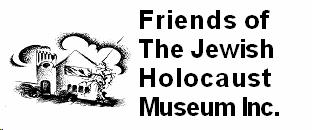
$3,300 to sponsor Shoshana Jordan’s Photographic Exhibition “the fabric of memory”.
Elly Brooks: President of the Friends of the Jewish Holocaust Museum Inc. www.jhc.org.au or Email: friends@jhc.org.au
WE INVITE YOU TO BECOME A FRIEND
MEMBERSHIP APPLICATION FORM 1July 2006
- 30 June 2007
NAME
ADDRESS
PHONE EMAIL
MEMBERSHIP FEE $25 Per Person friends young friends 21 - 35
MEMBERSHIP FEE $45 Per Family friends young friends 21 – 35
MEMBERSHIP FEE $15 Single Concession.
AMOUNT TOTAL
Please enclose cheque or provide credit card details below Visa MasterCard Bankcard Diners' Club American Express
Card No Expiry Date / Cardholders’ Name Signature
35
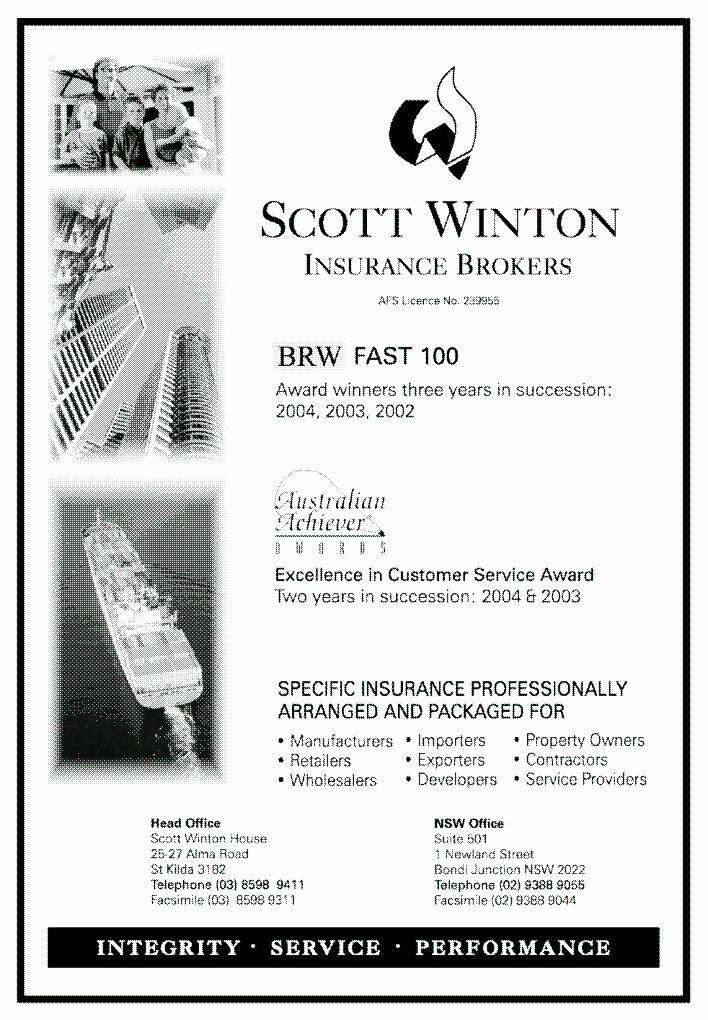
36
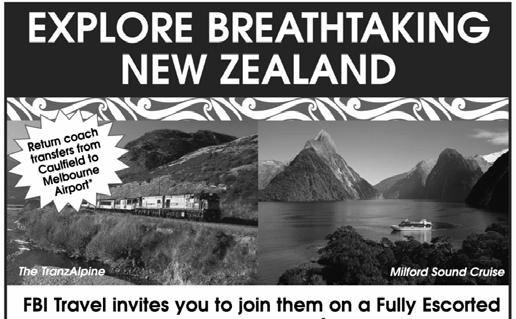
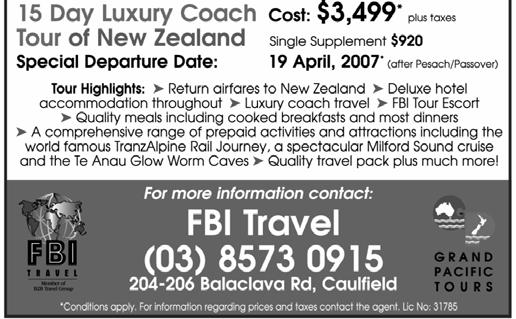
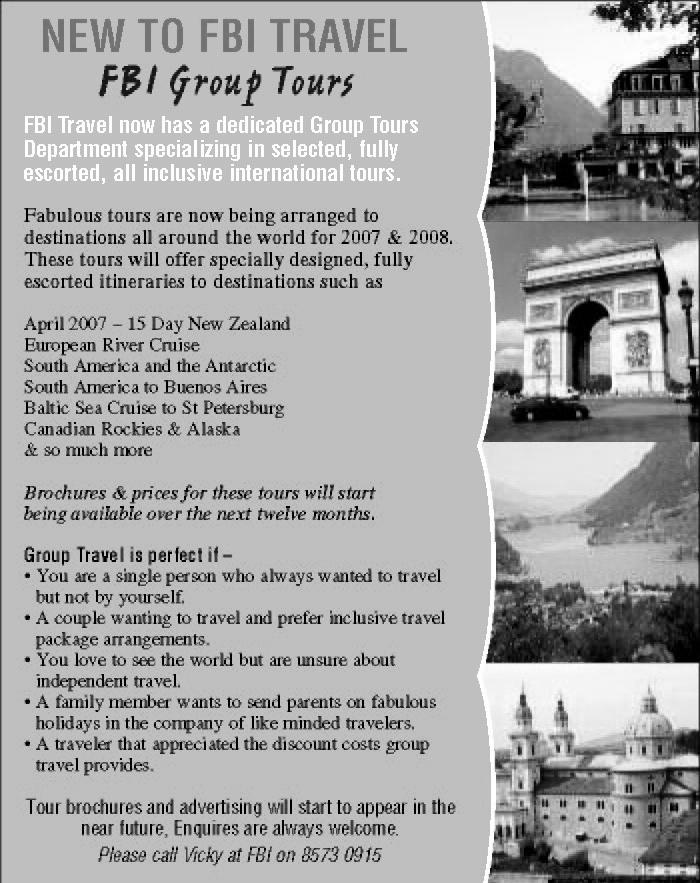
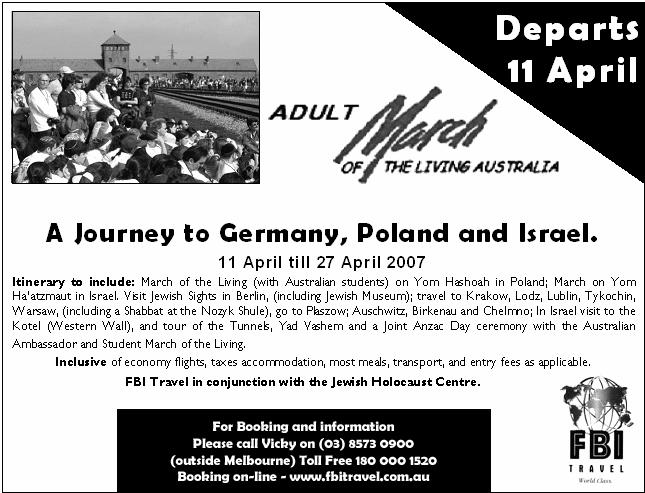
37


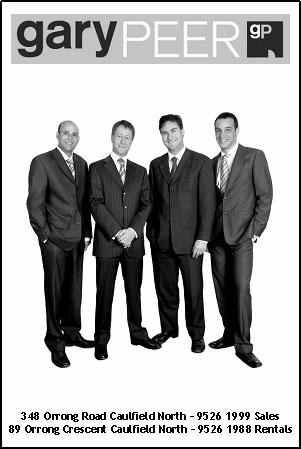
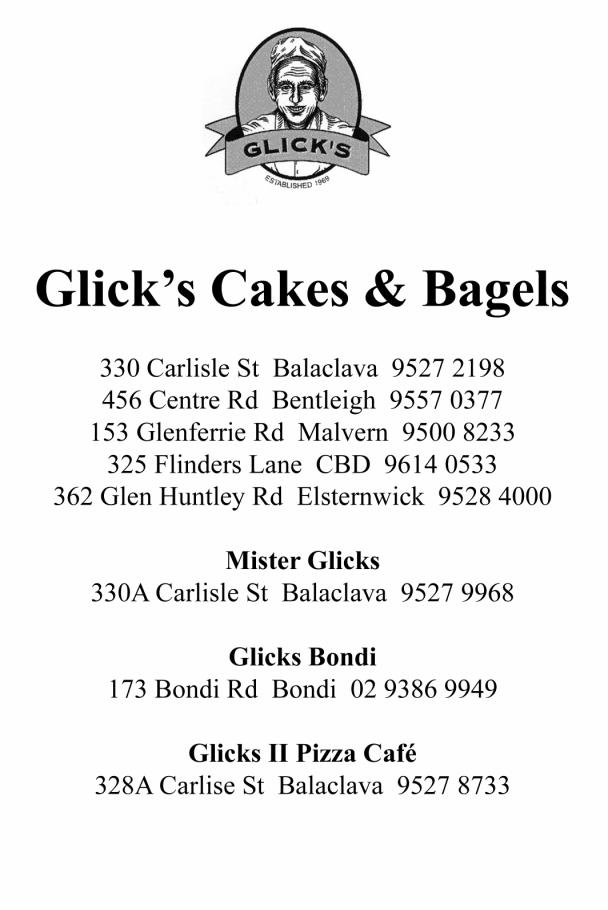
38
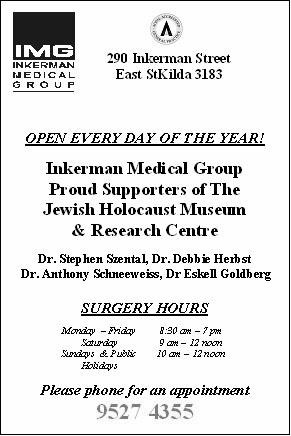


39 With the Compliments of Harry Blatt Pharmacy 781 Glenhuntly Road Caulfield South Ph. 9523 9695 www.kligerwood.com.au ESTATE AGENTS, AUCTIONEERS, PROPERTY MANAGERS, VALUERS DIRECTORS Barry Novy & Eugene Wood ASSOCIATE DIRECTORS Nicholas Breheny & Rogan Sedger Proud of our reputation for excellence in professional property services for 66 years. 358 Glenhuntly Rd, Elsternwick. VIC. 3185 Ph: 95237824 Organic produce, health food, café and natural therapy store. OPEN 7 DAYS (Present this ad. for your free coffee or tea.)
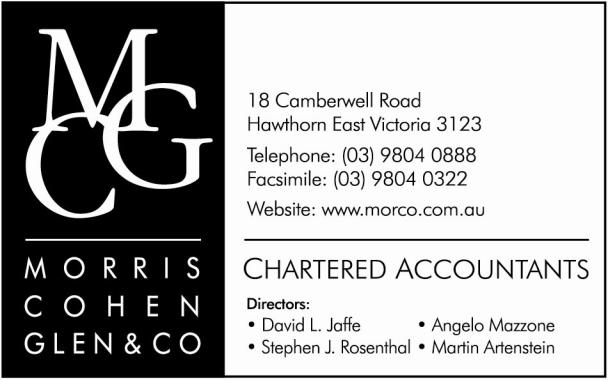


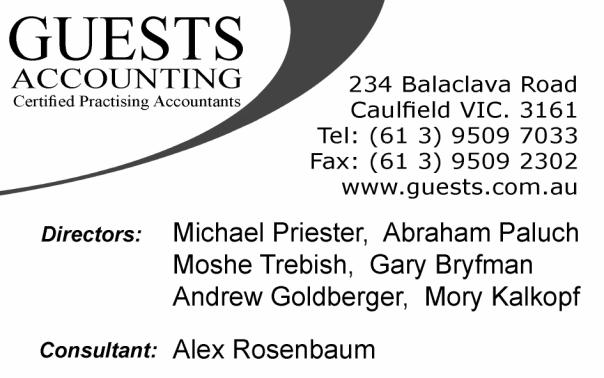
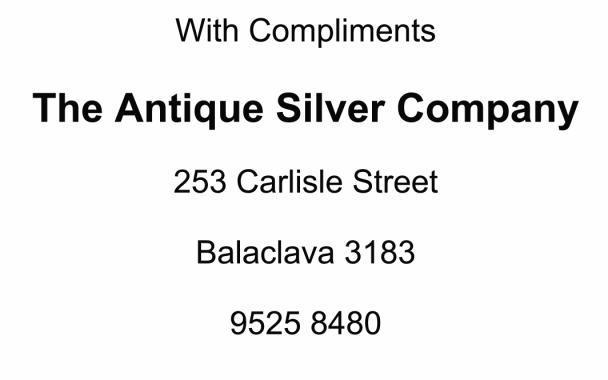

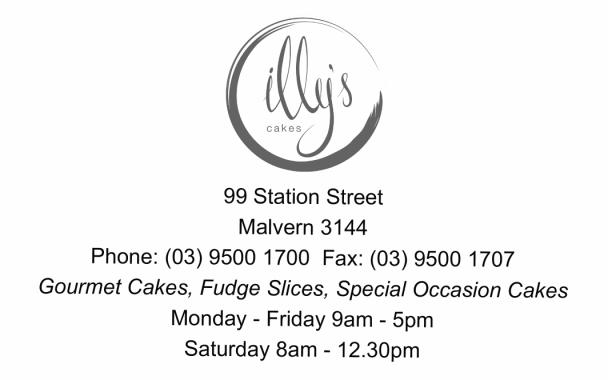

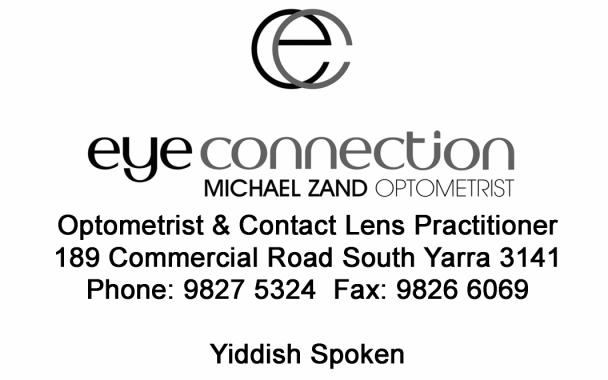
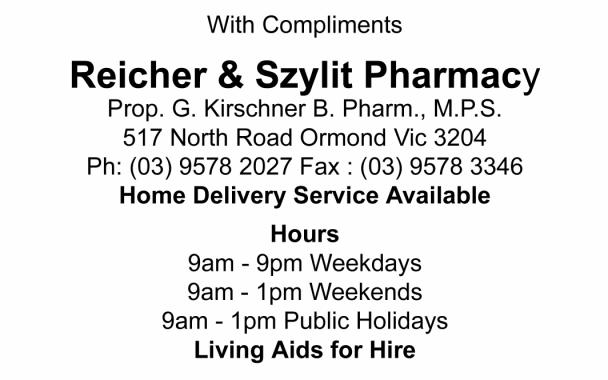
40



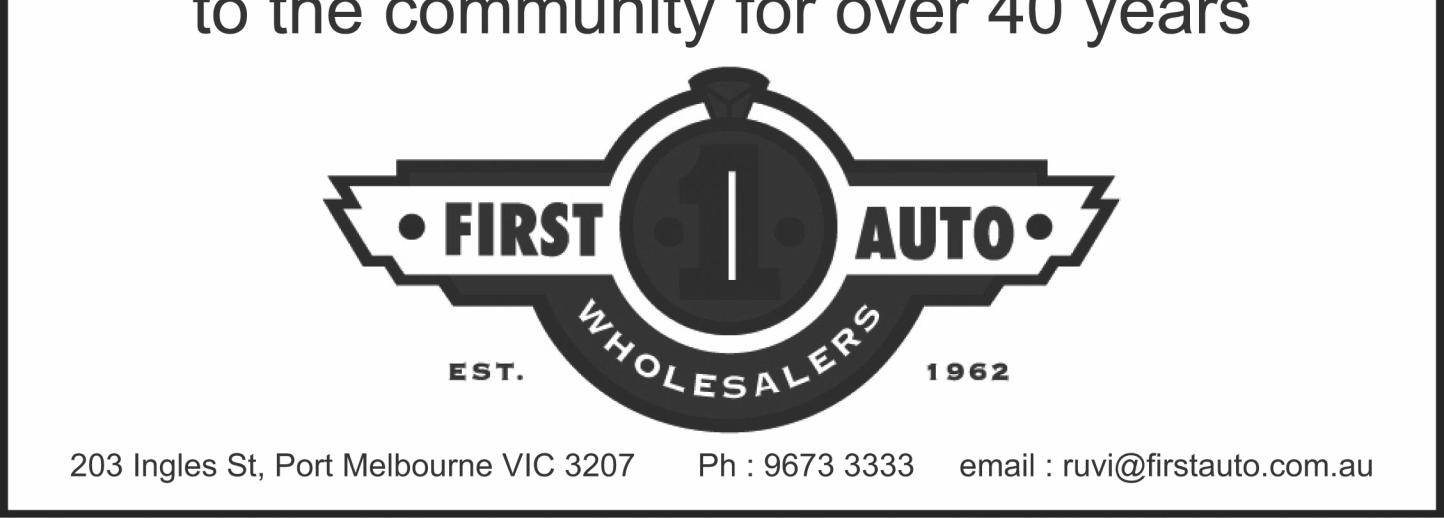

41
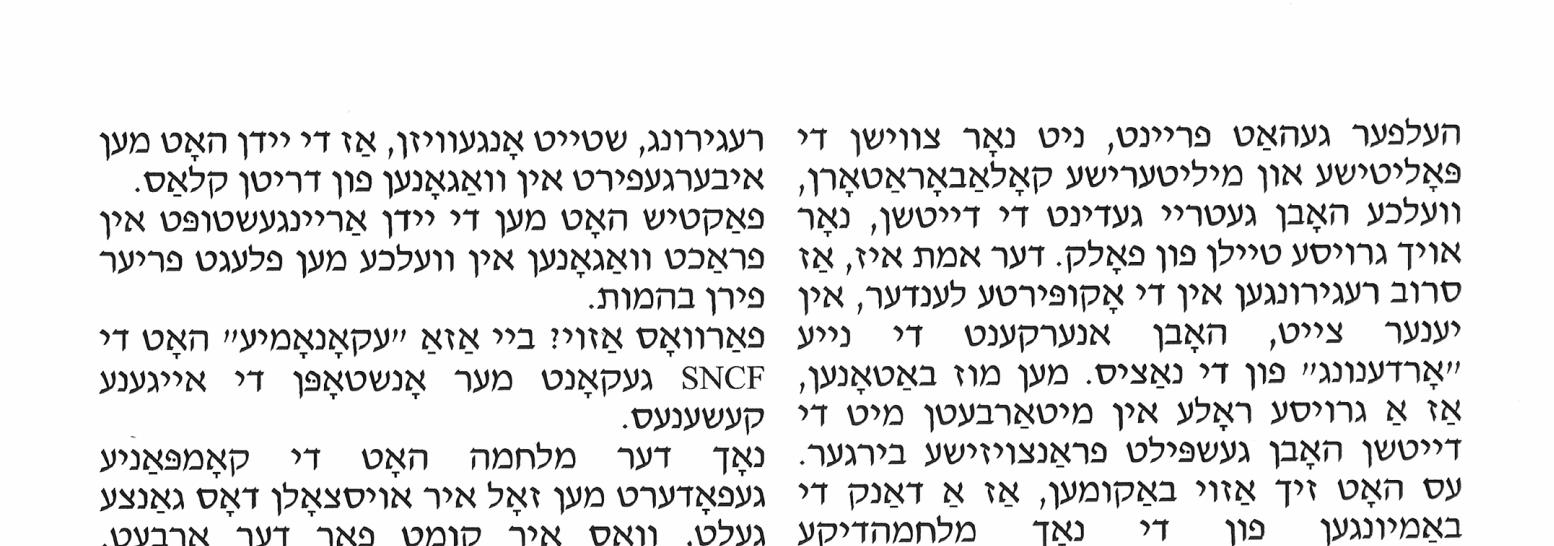
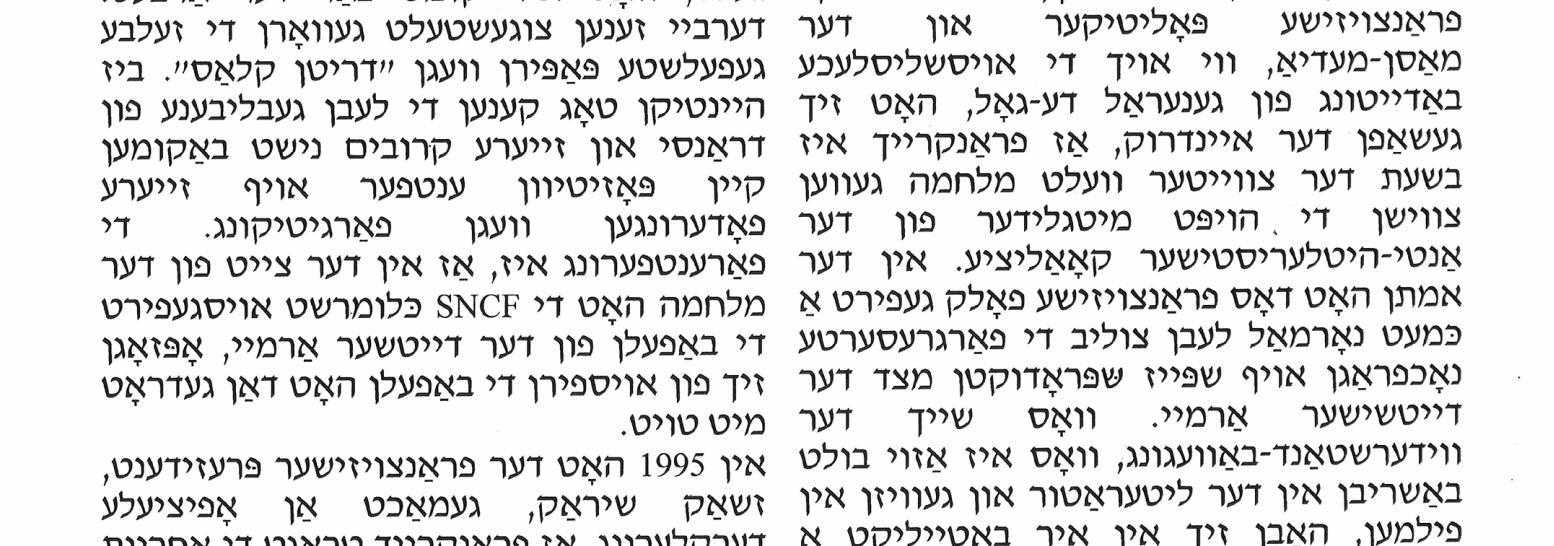
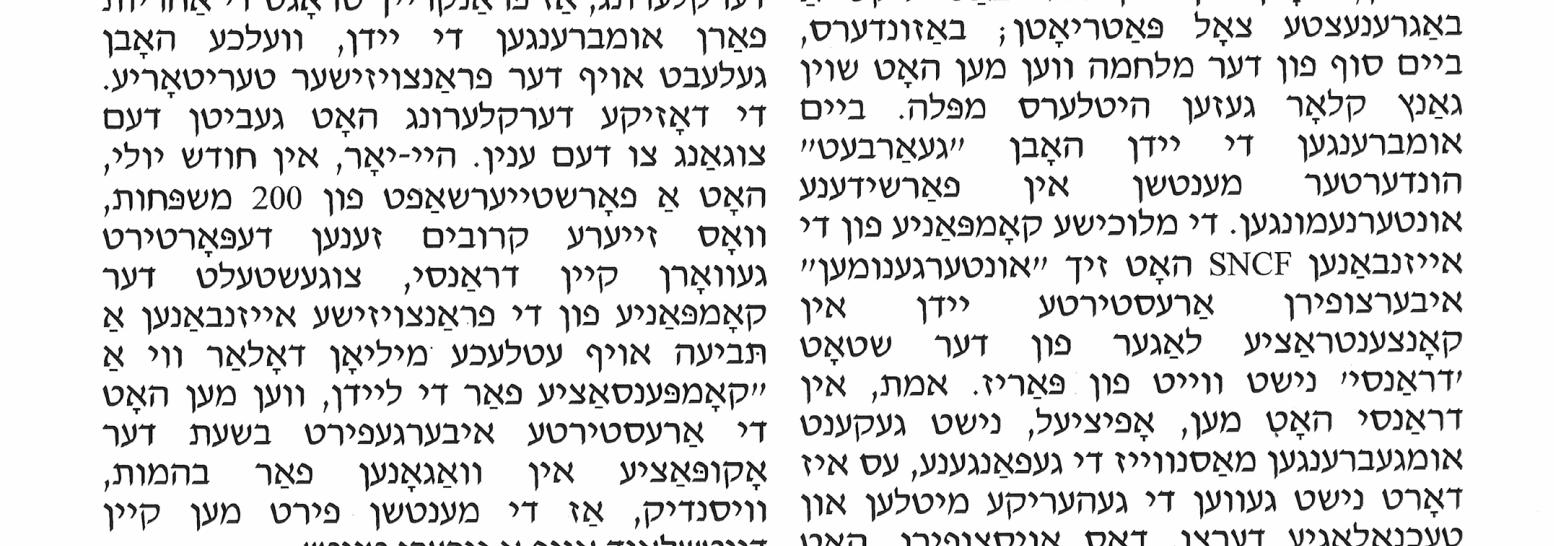
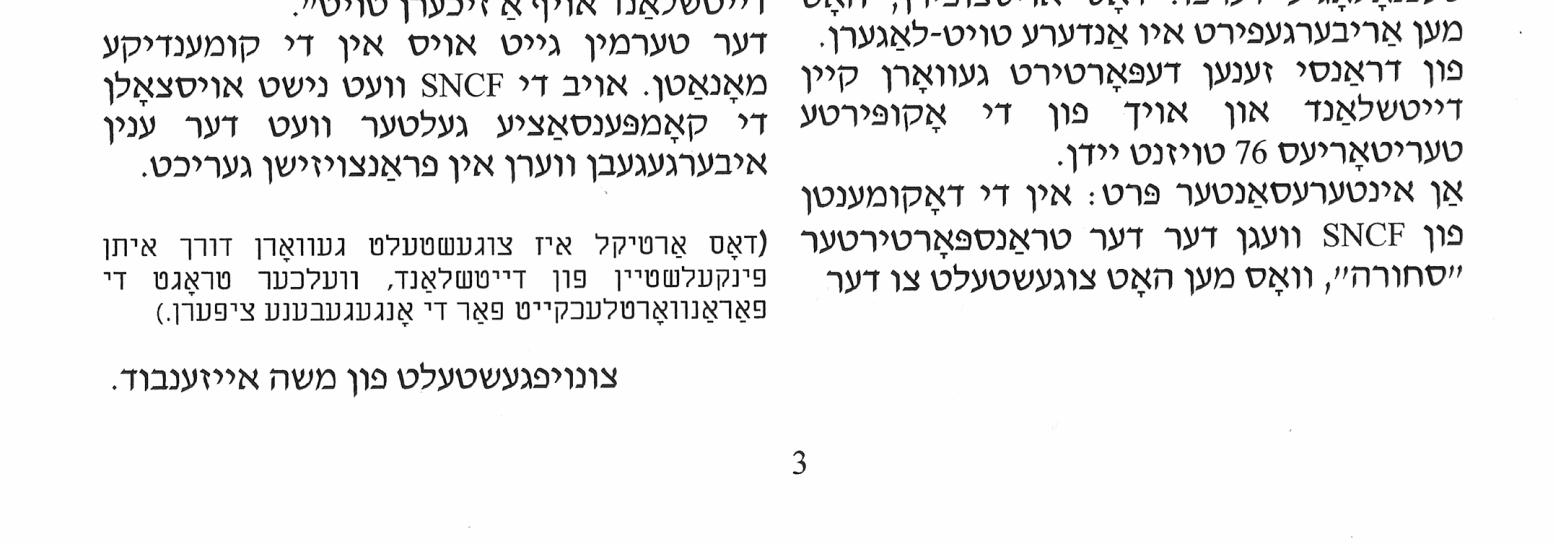
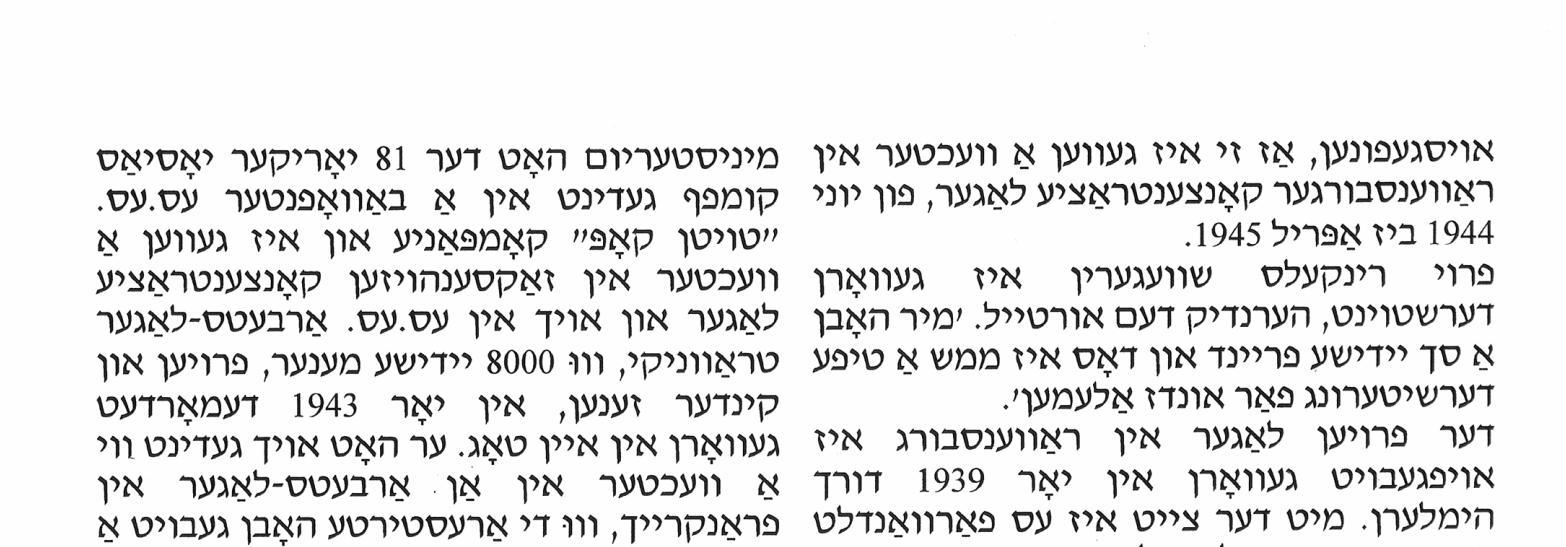
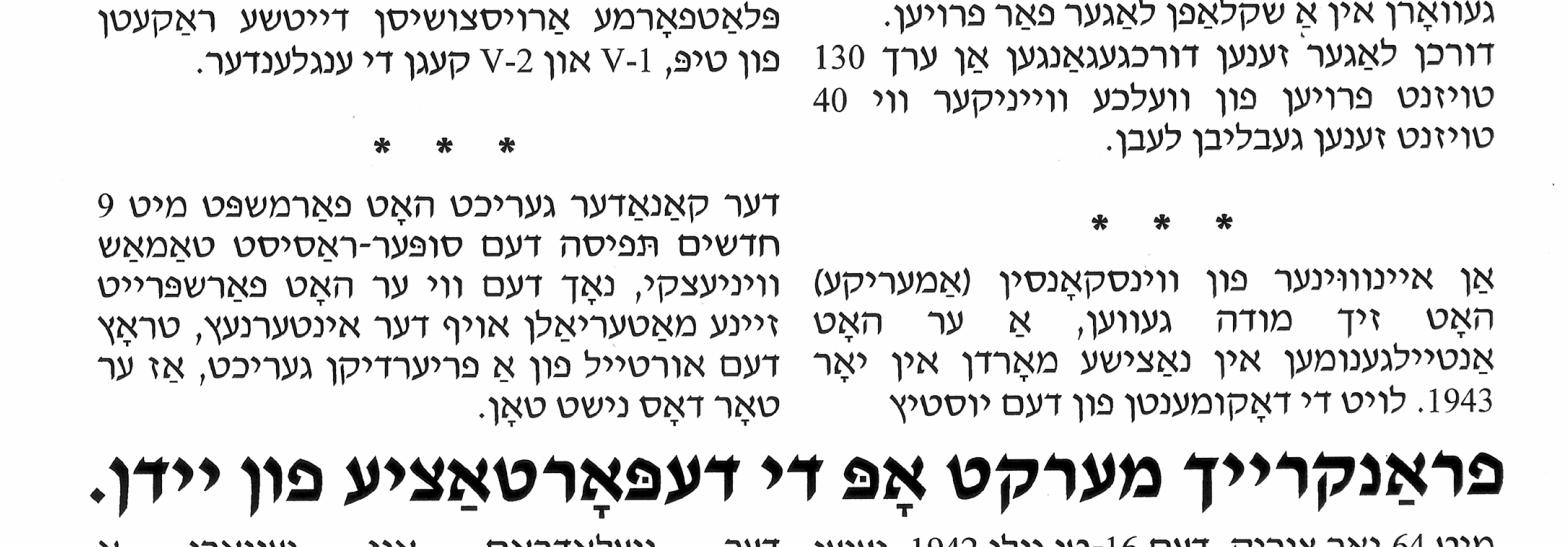
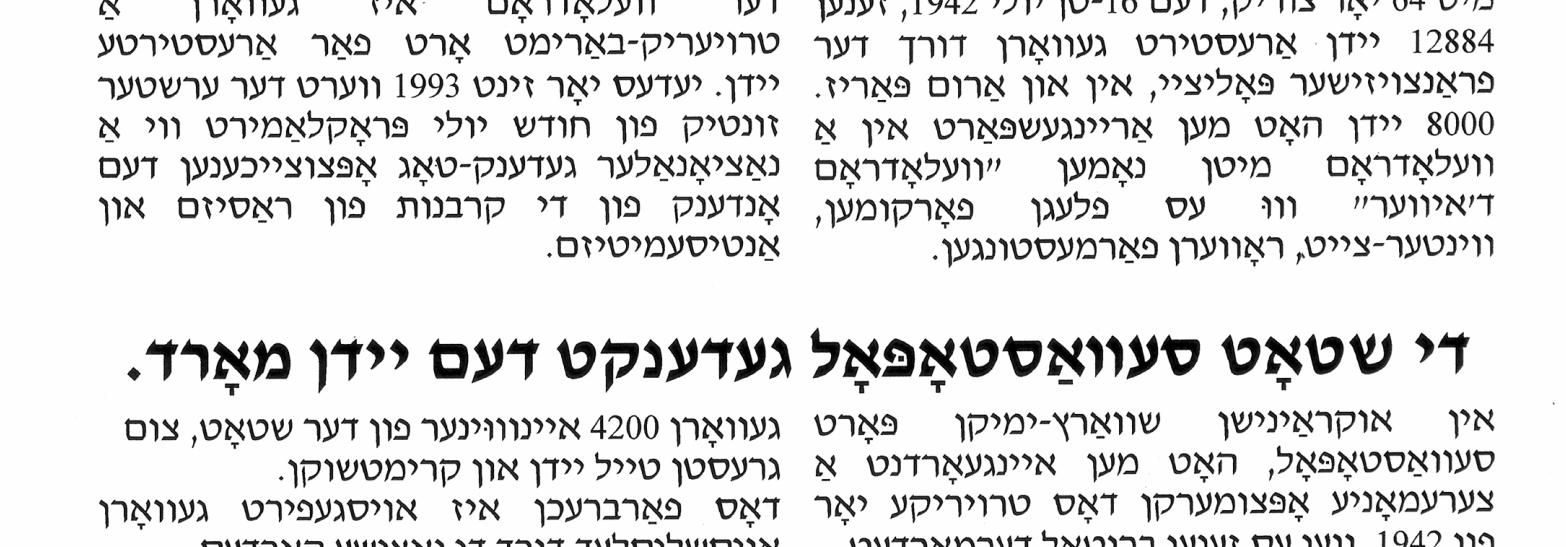
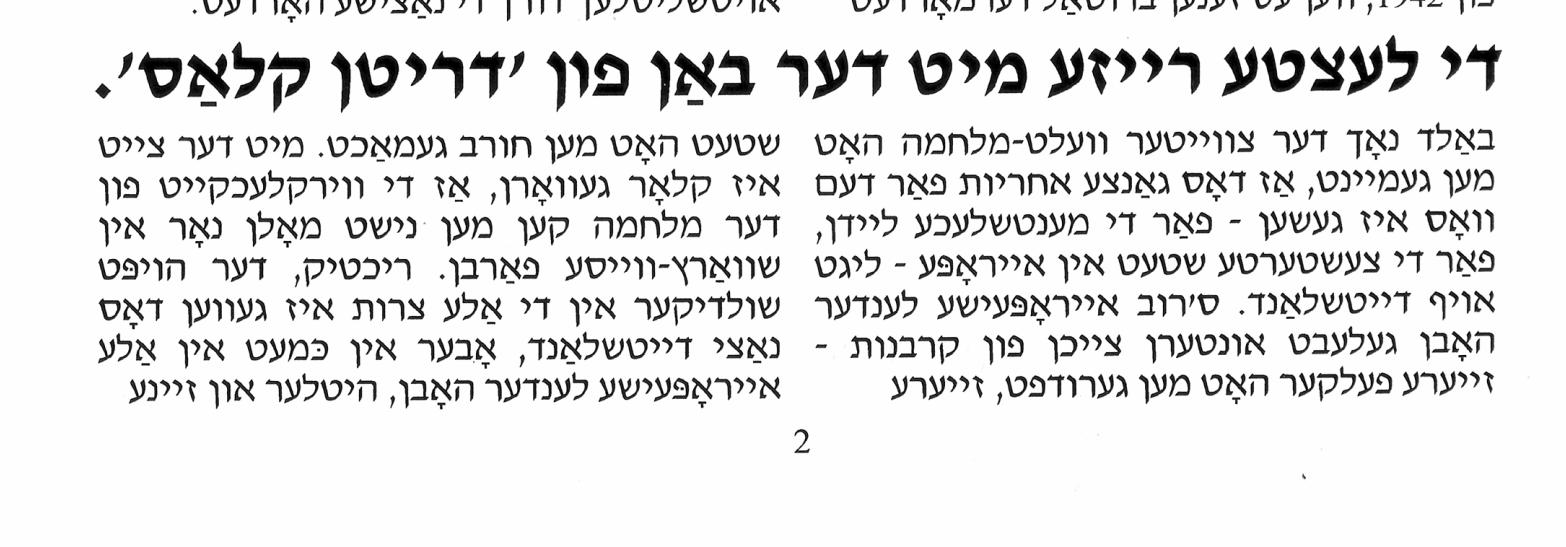


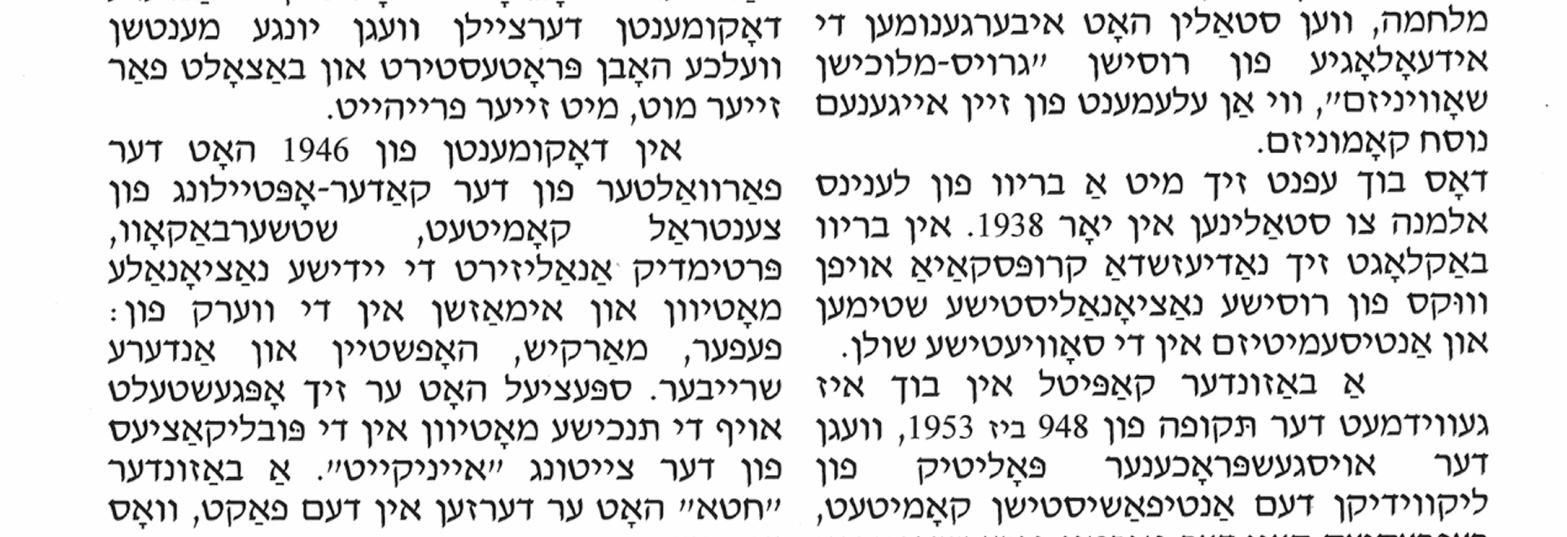
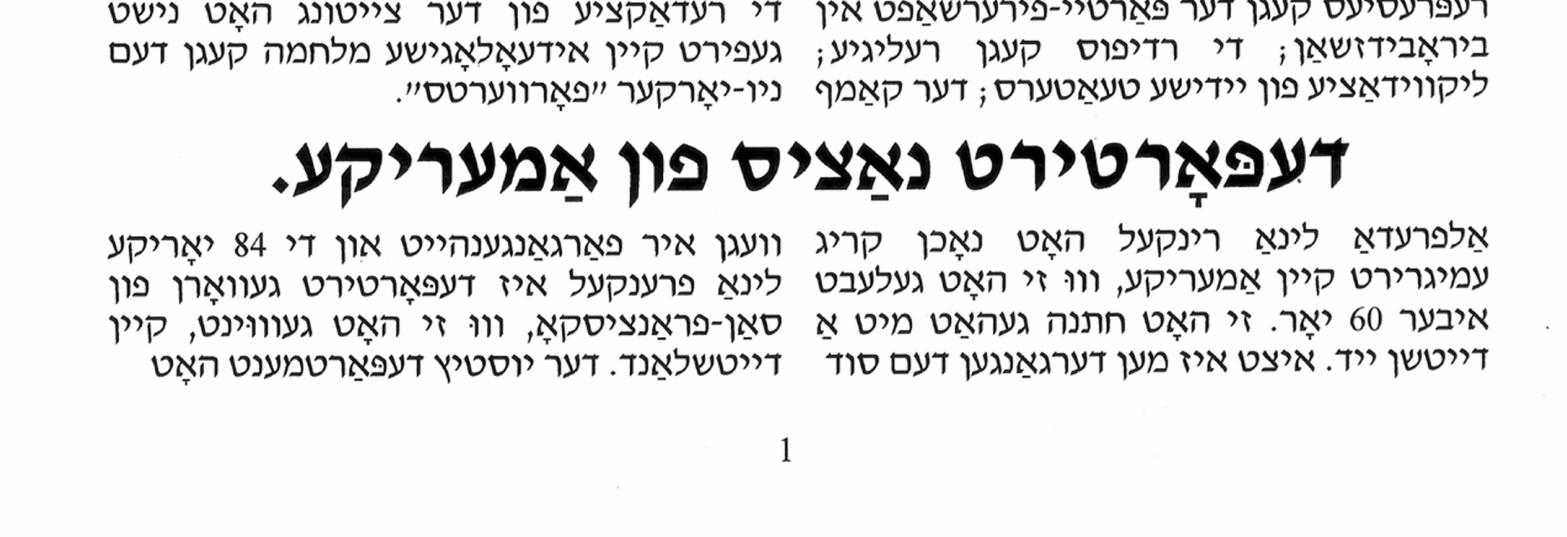





















 Jayne Josem, Curator
Jayne Josem, Curator




























 Rebecca Clarke
Rebecca Clarke
 Emma Murphy
Emma Murphy
















































